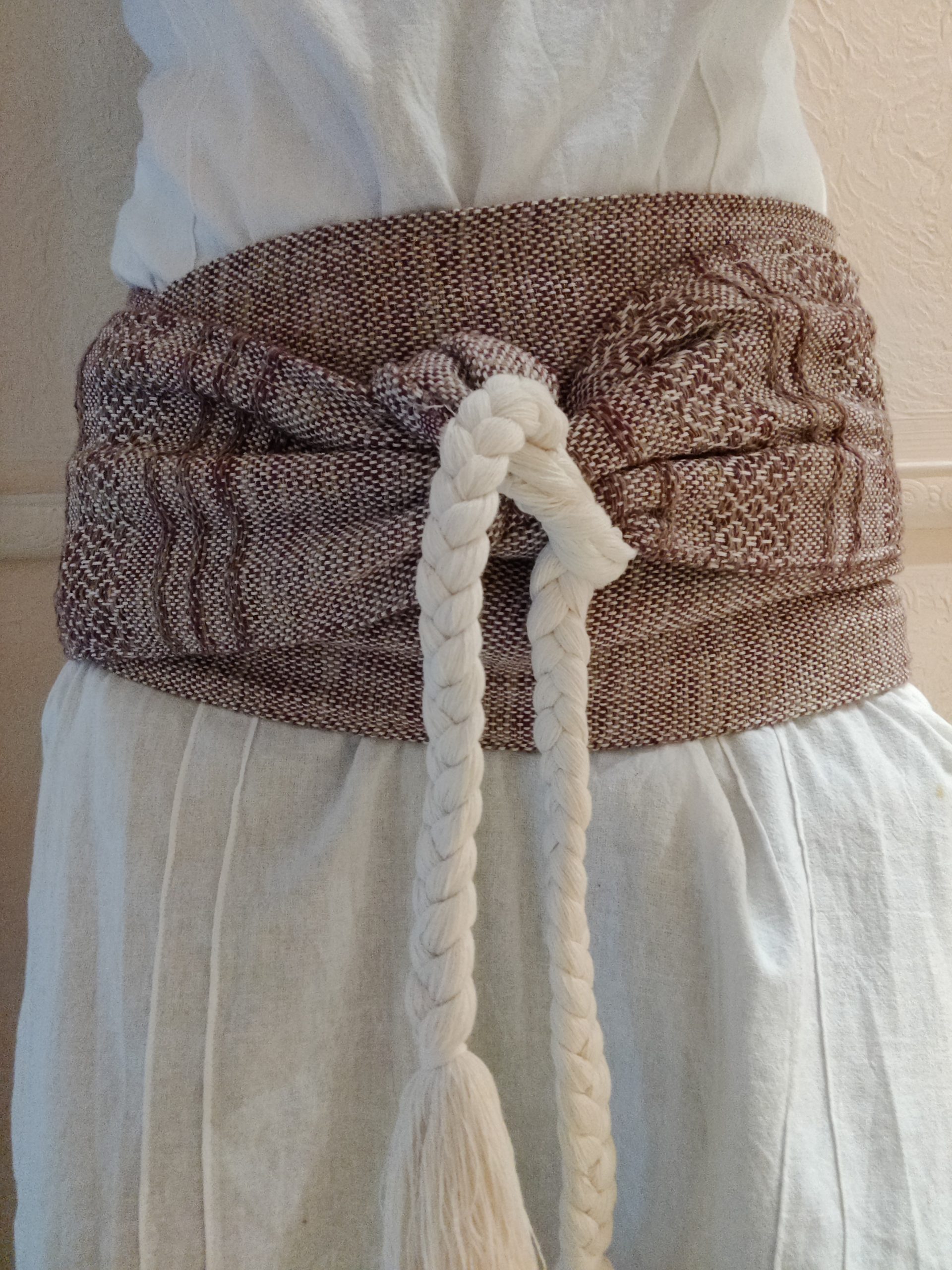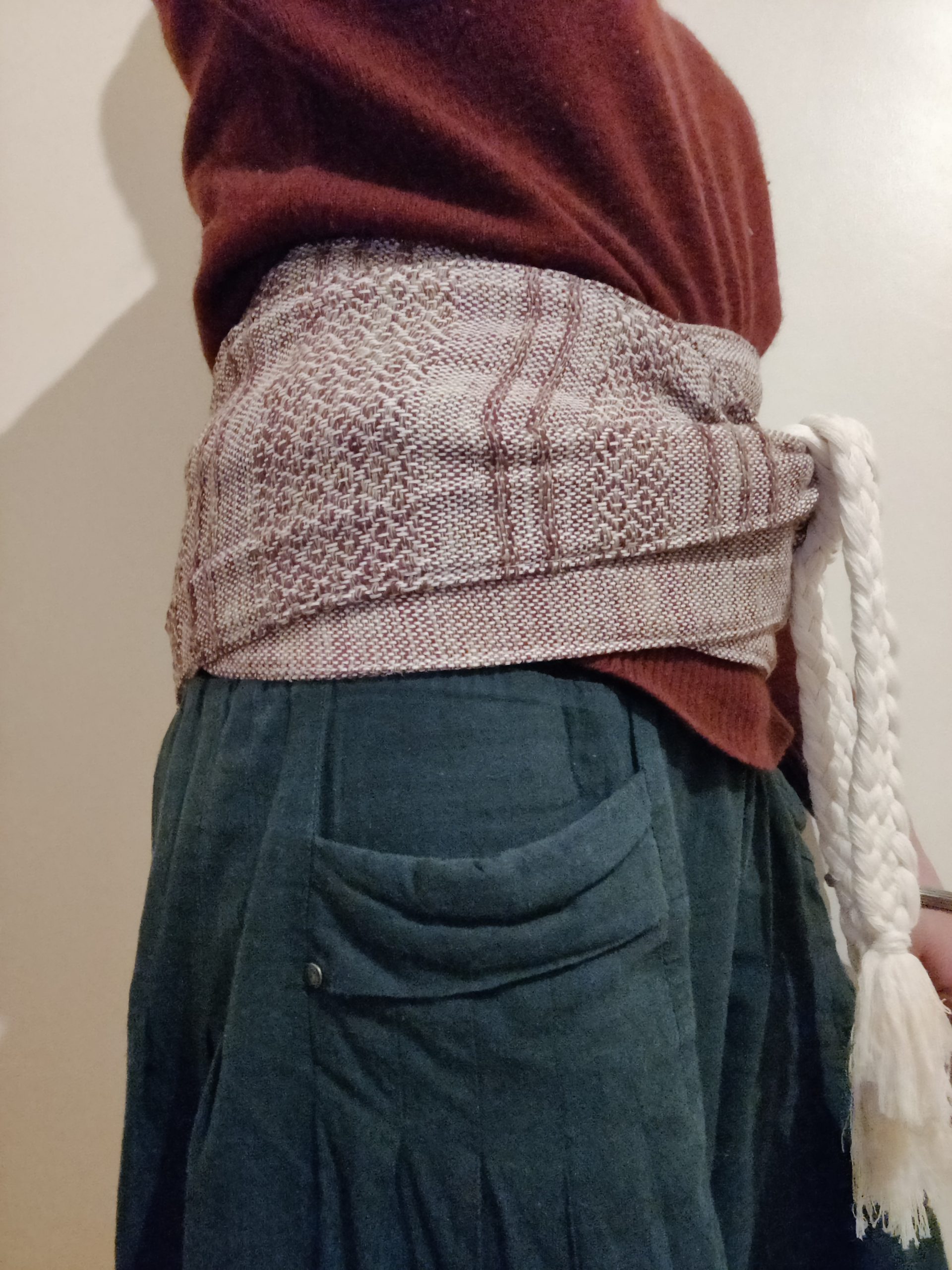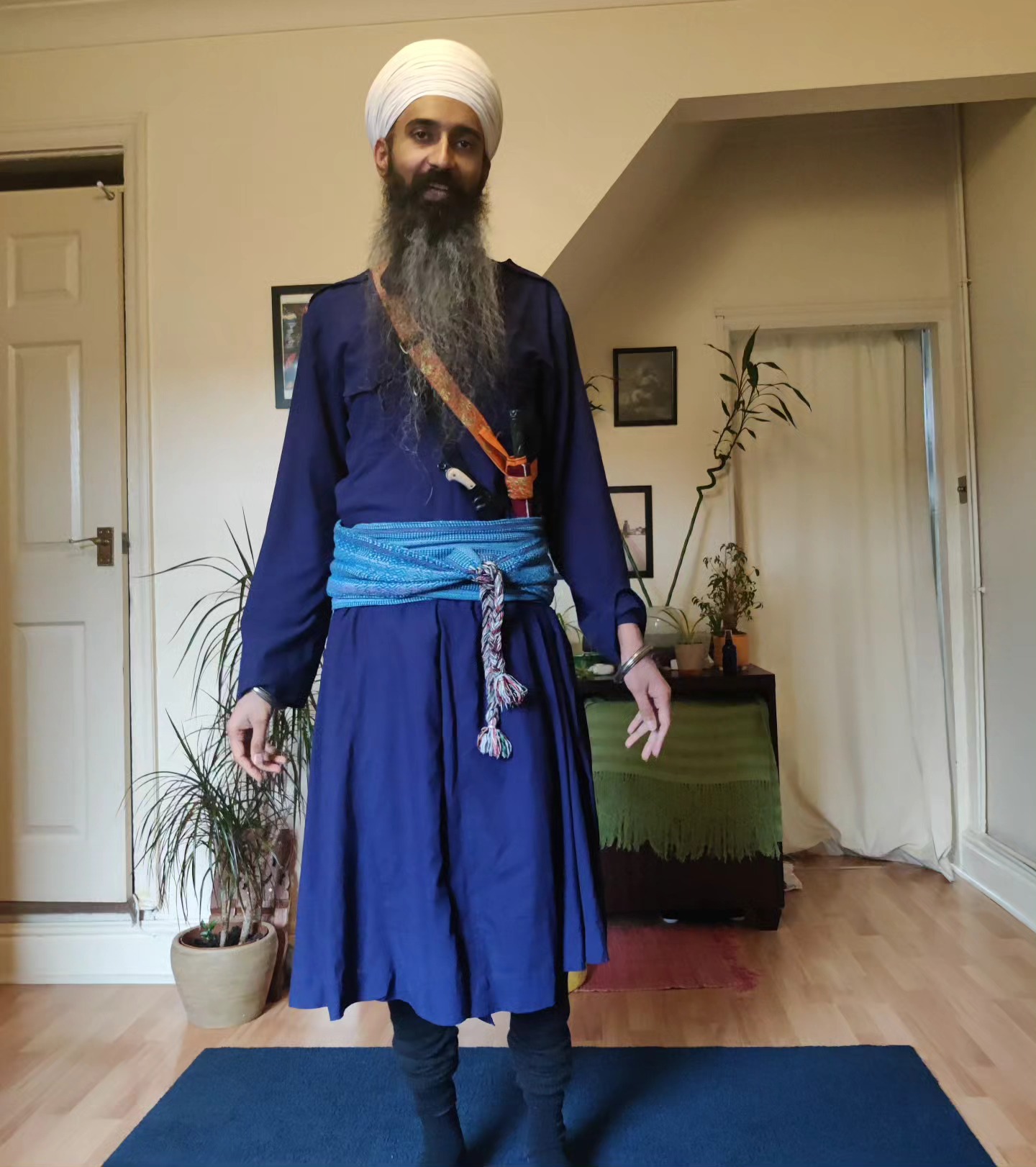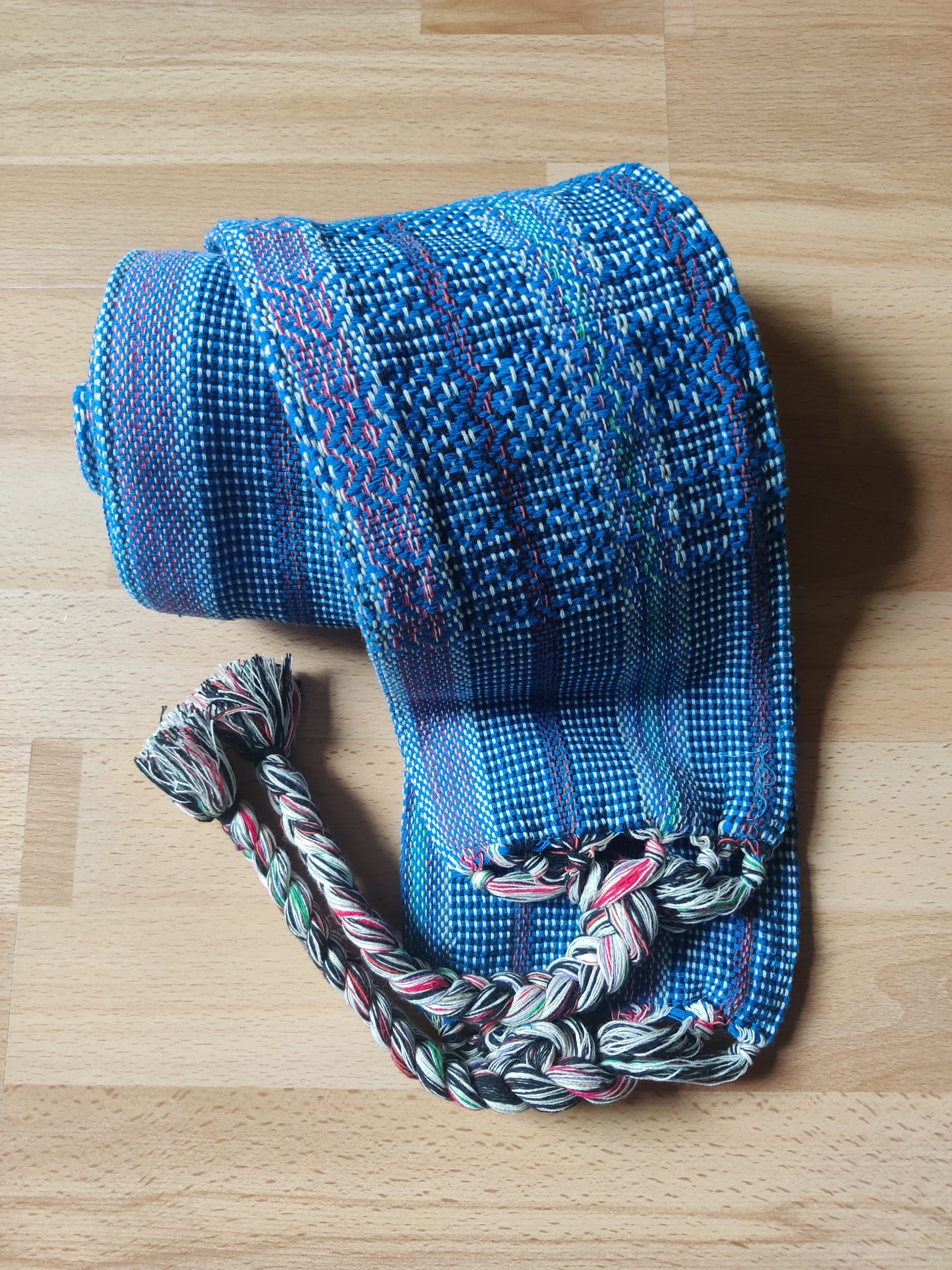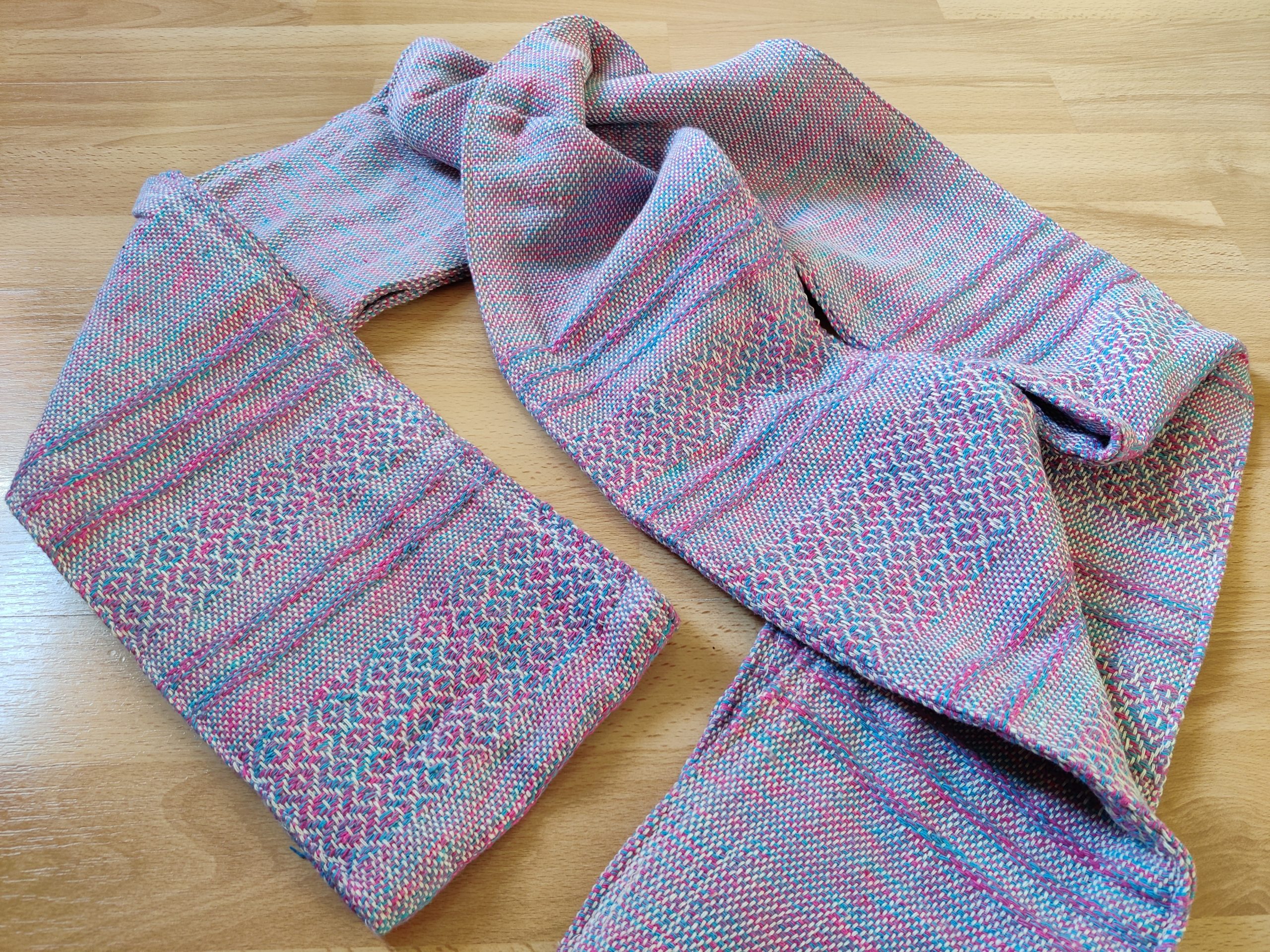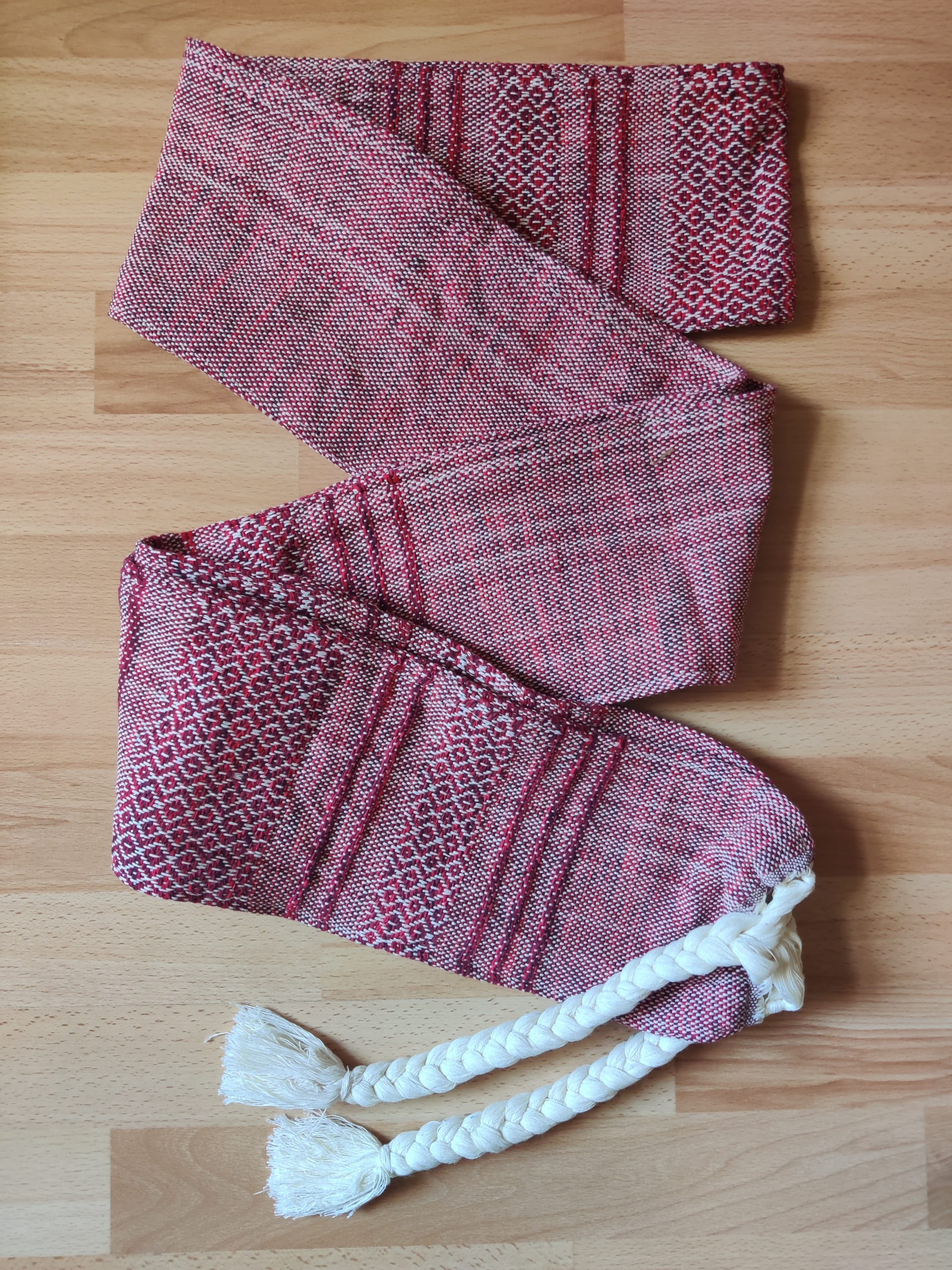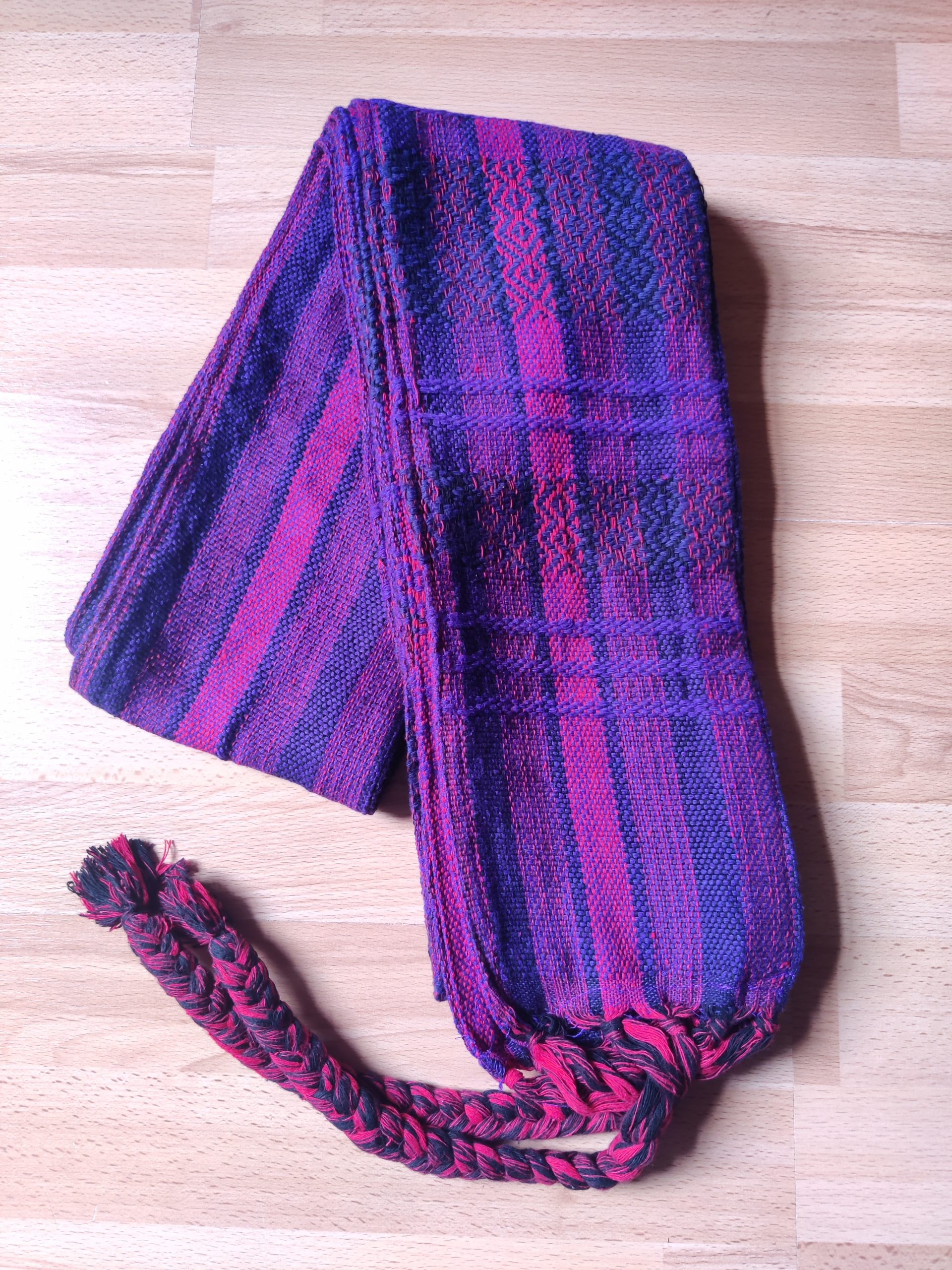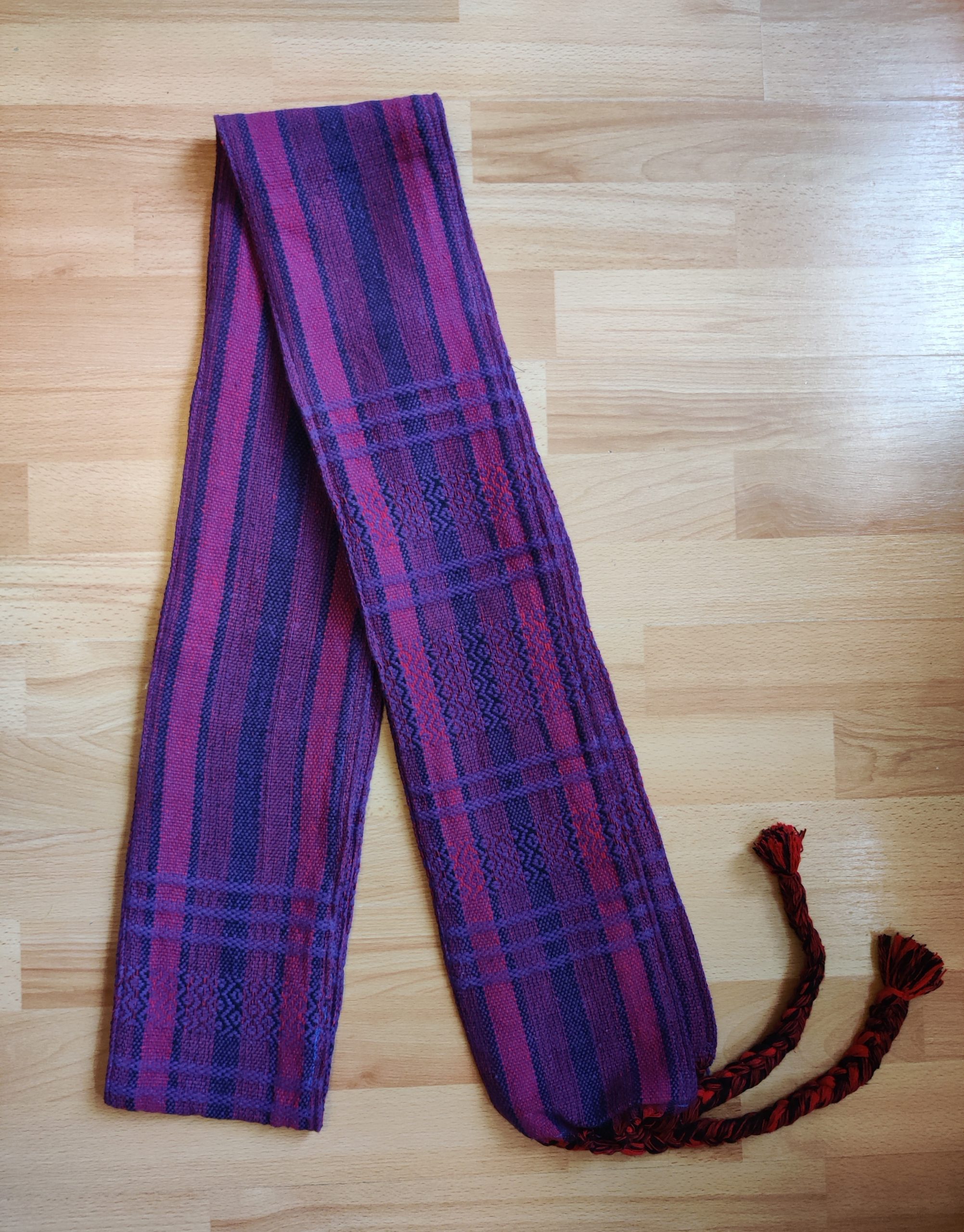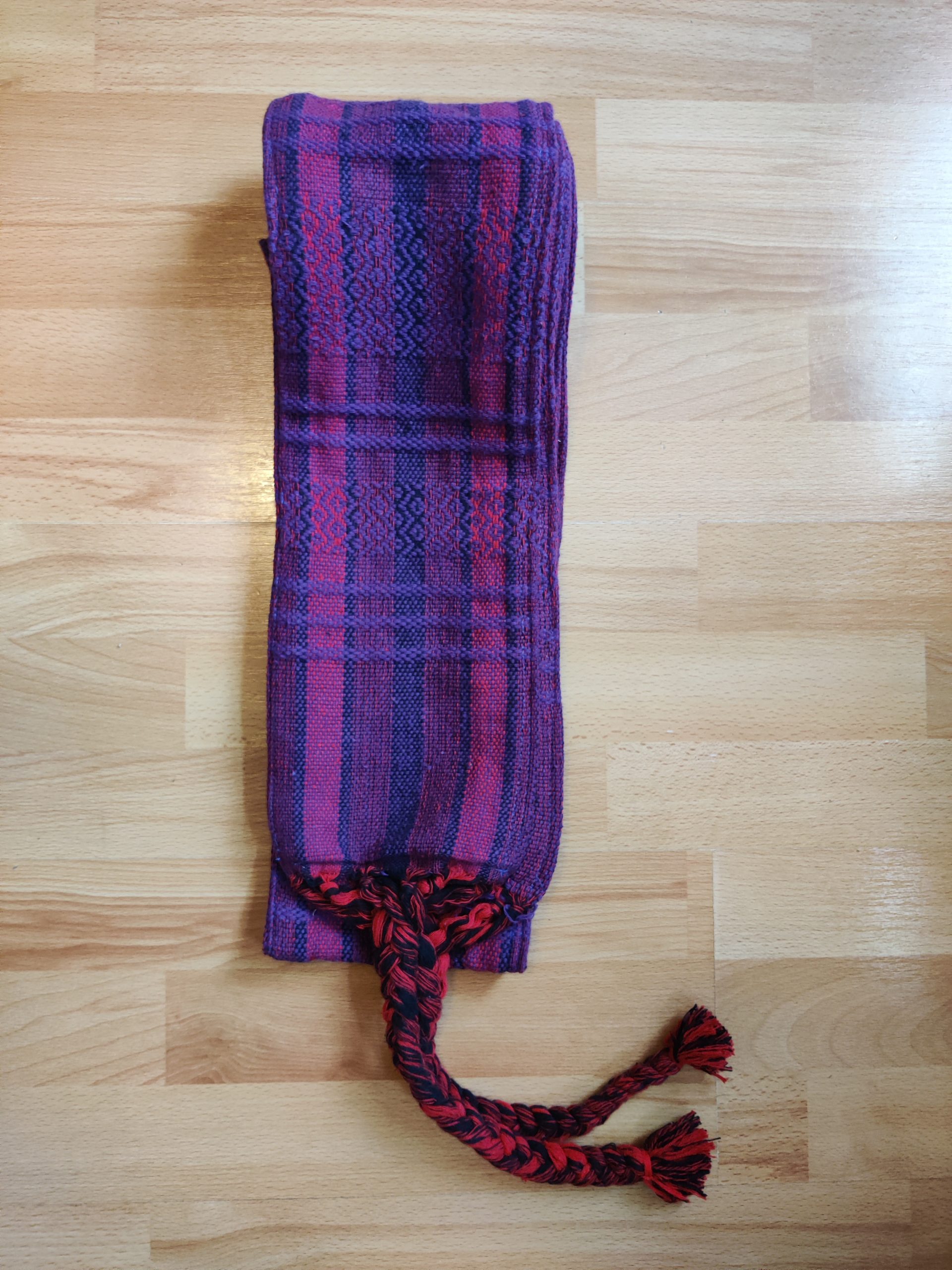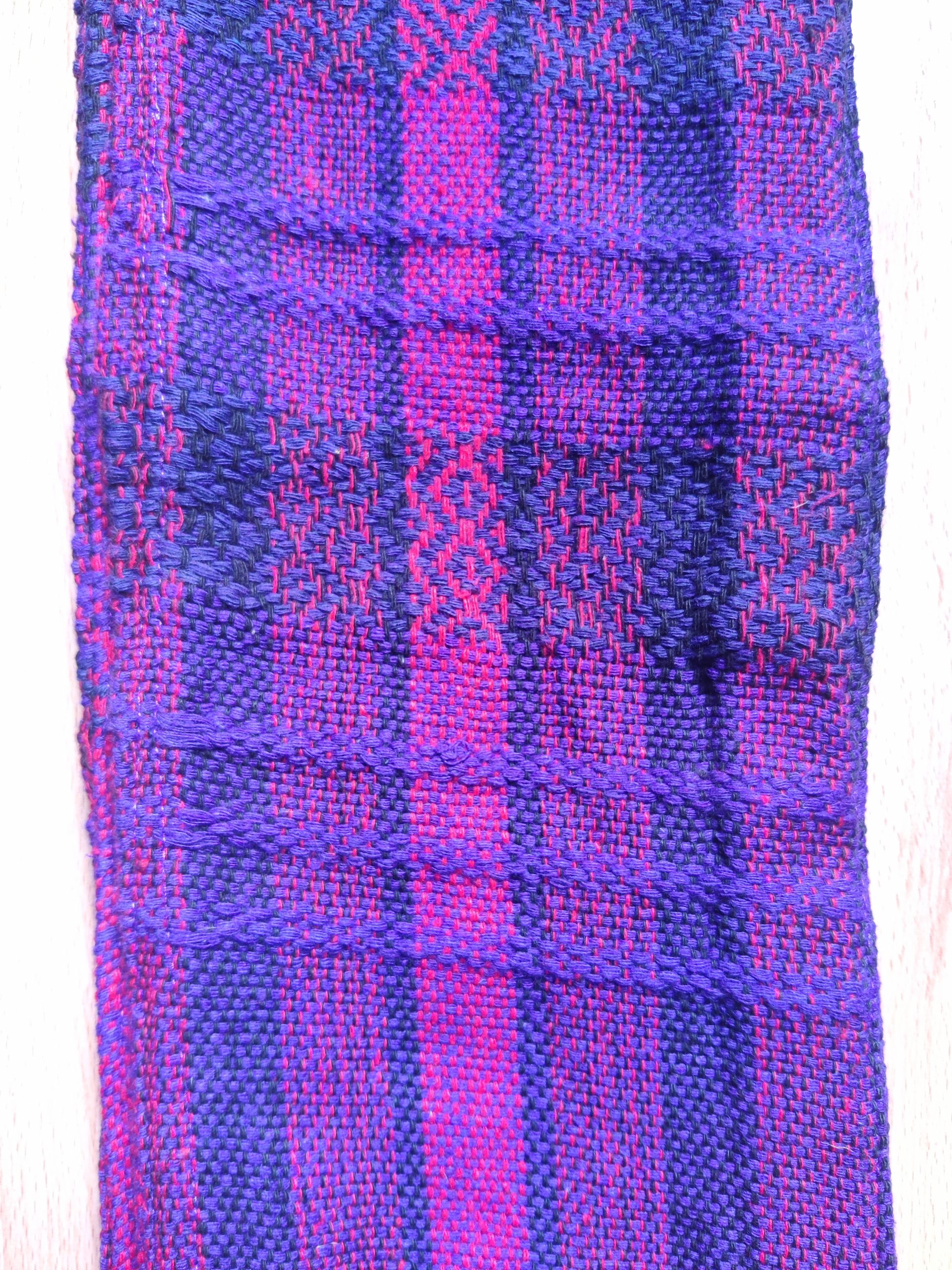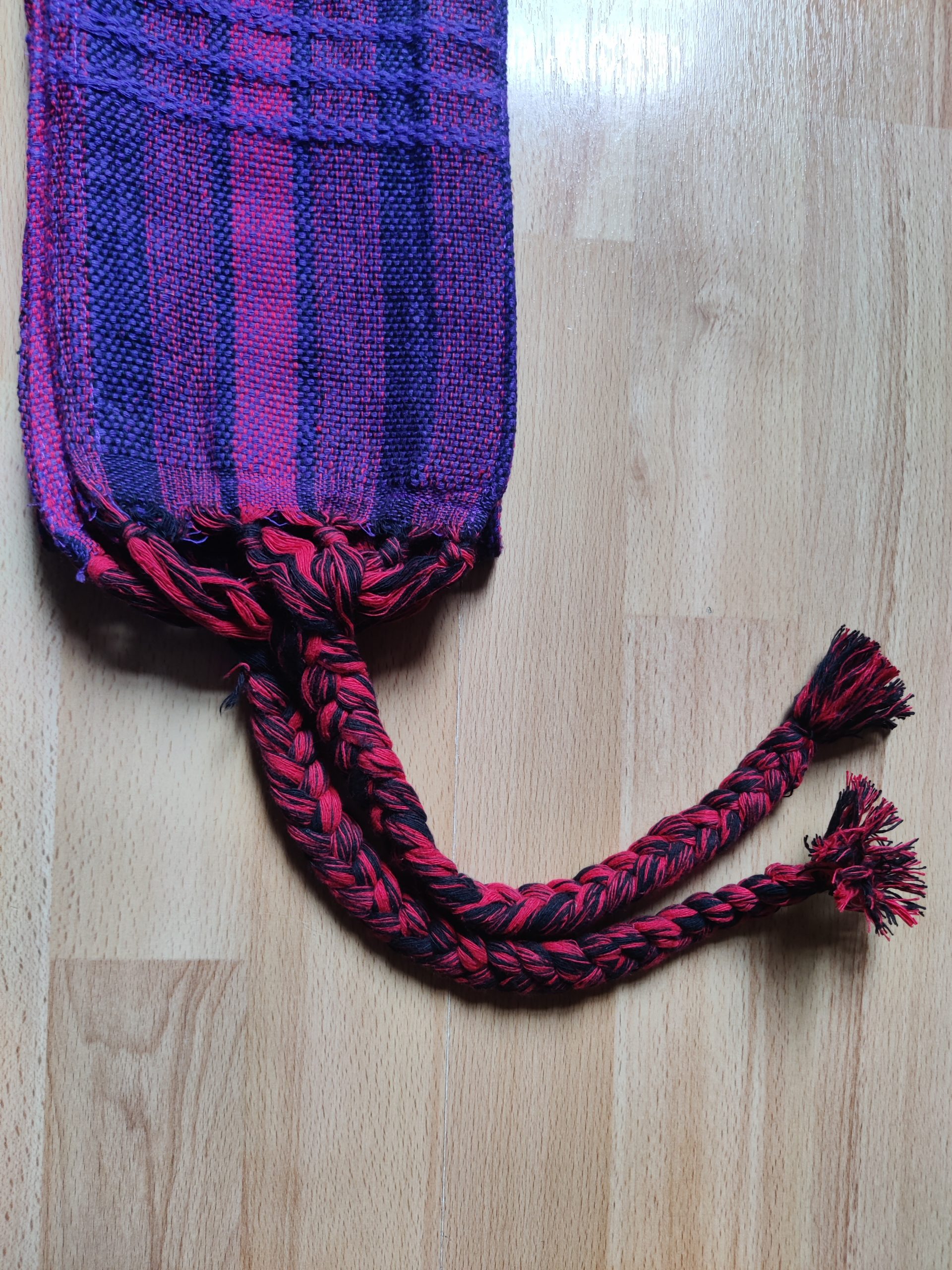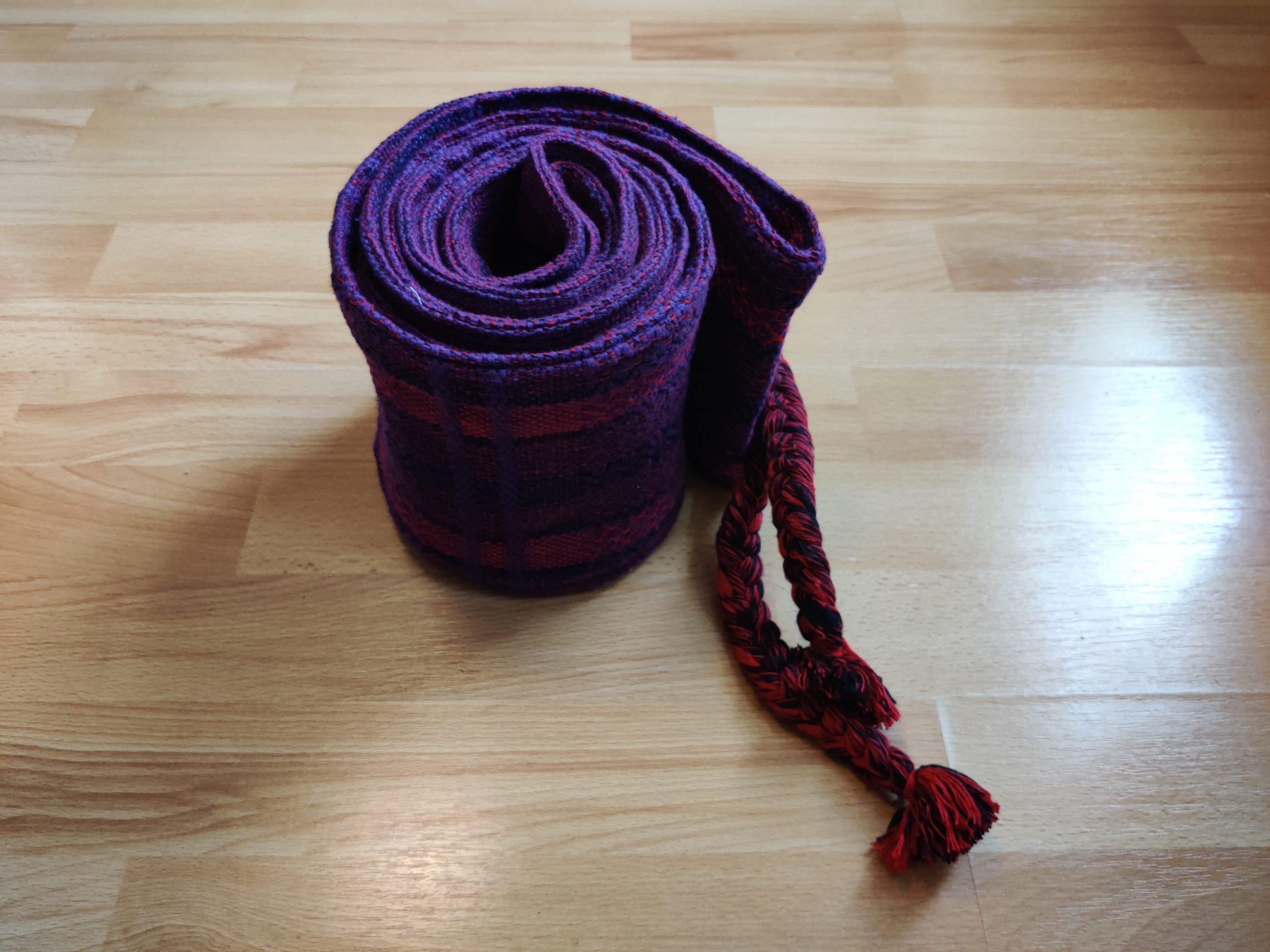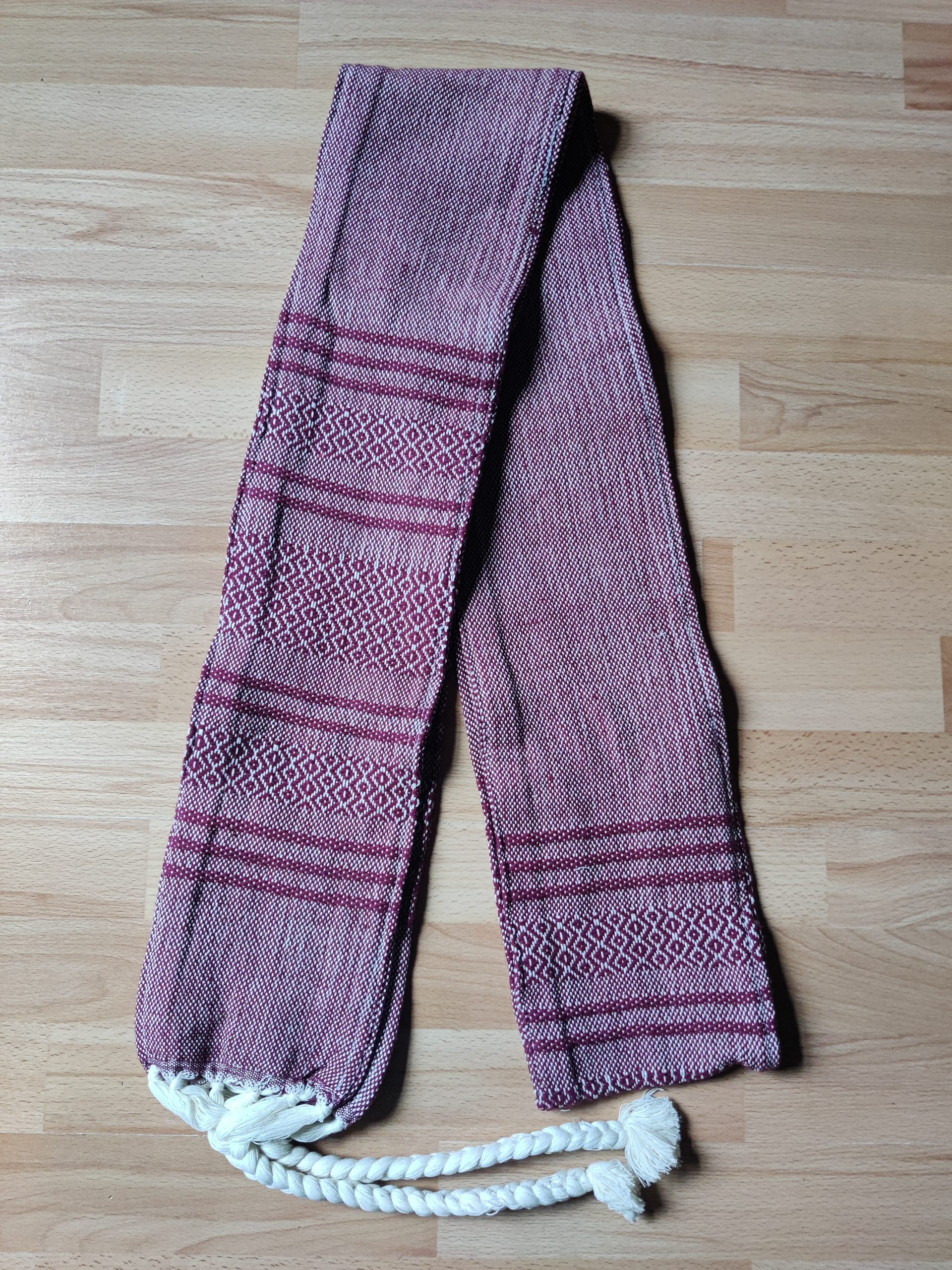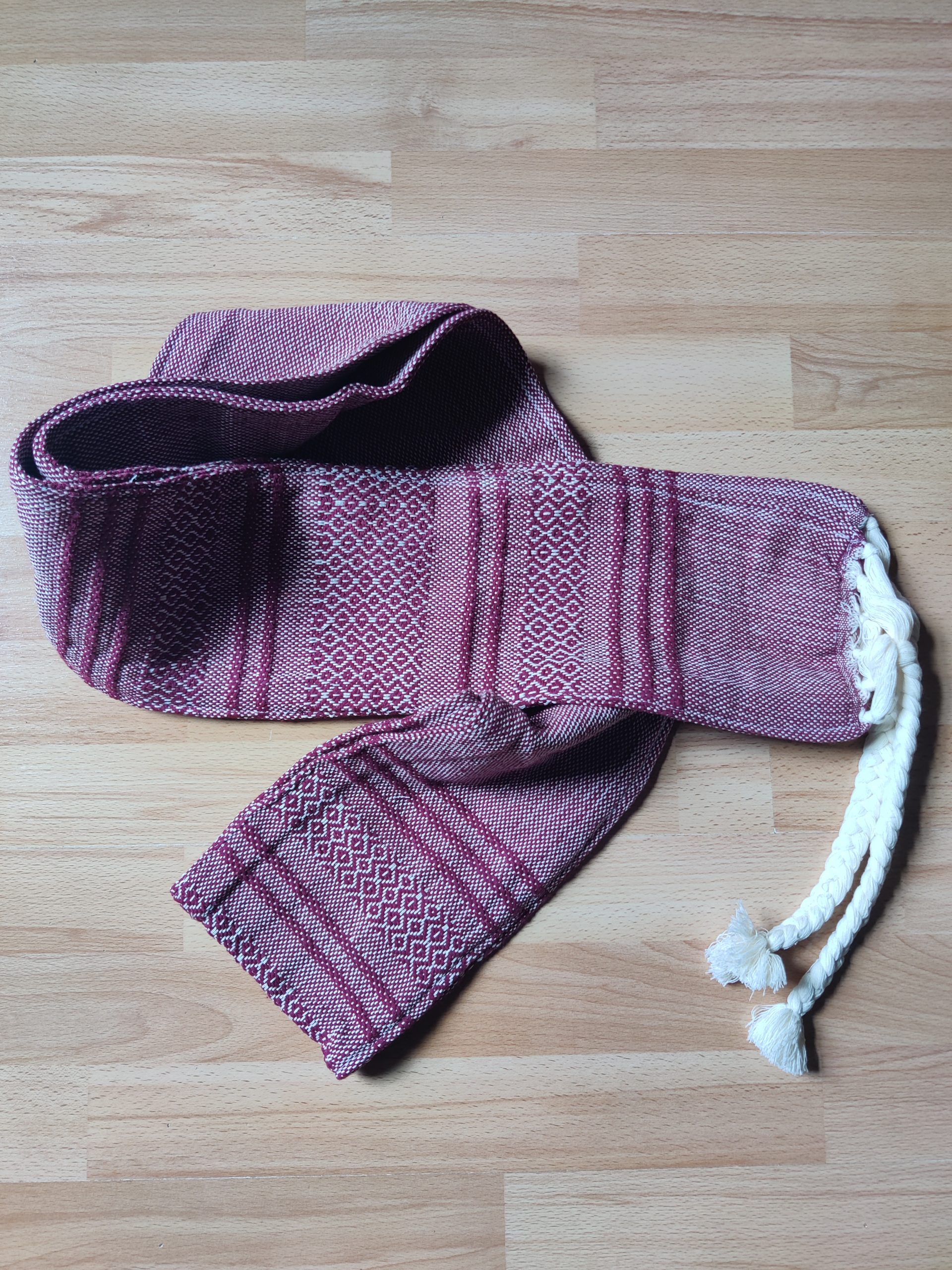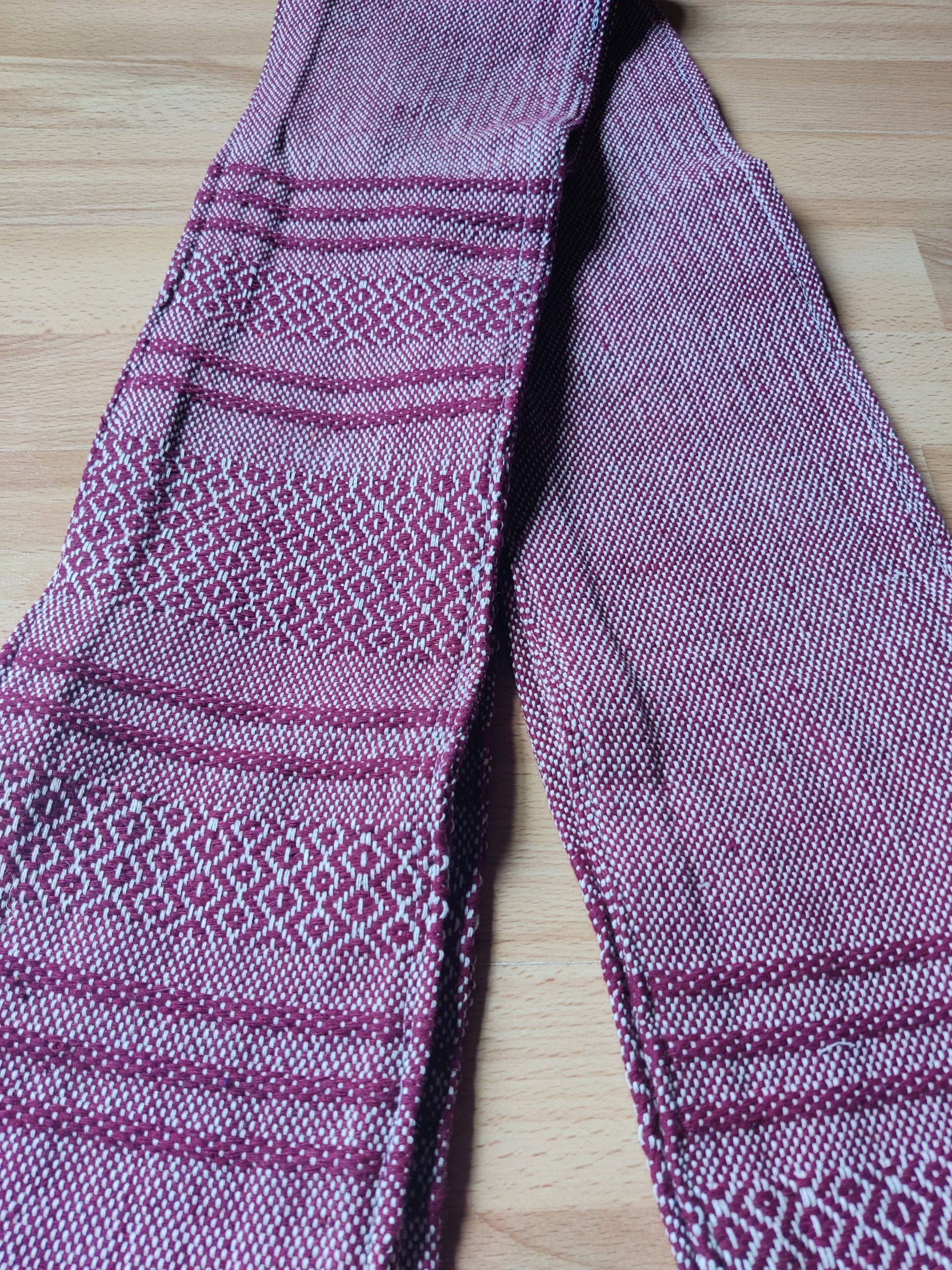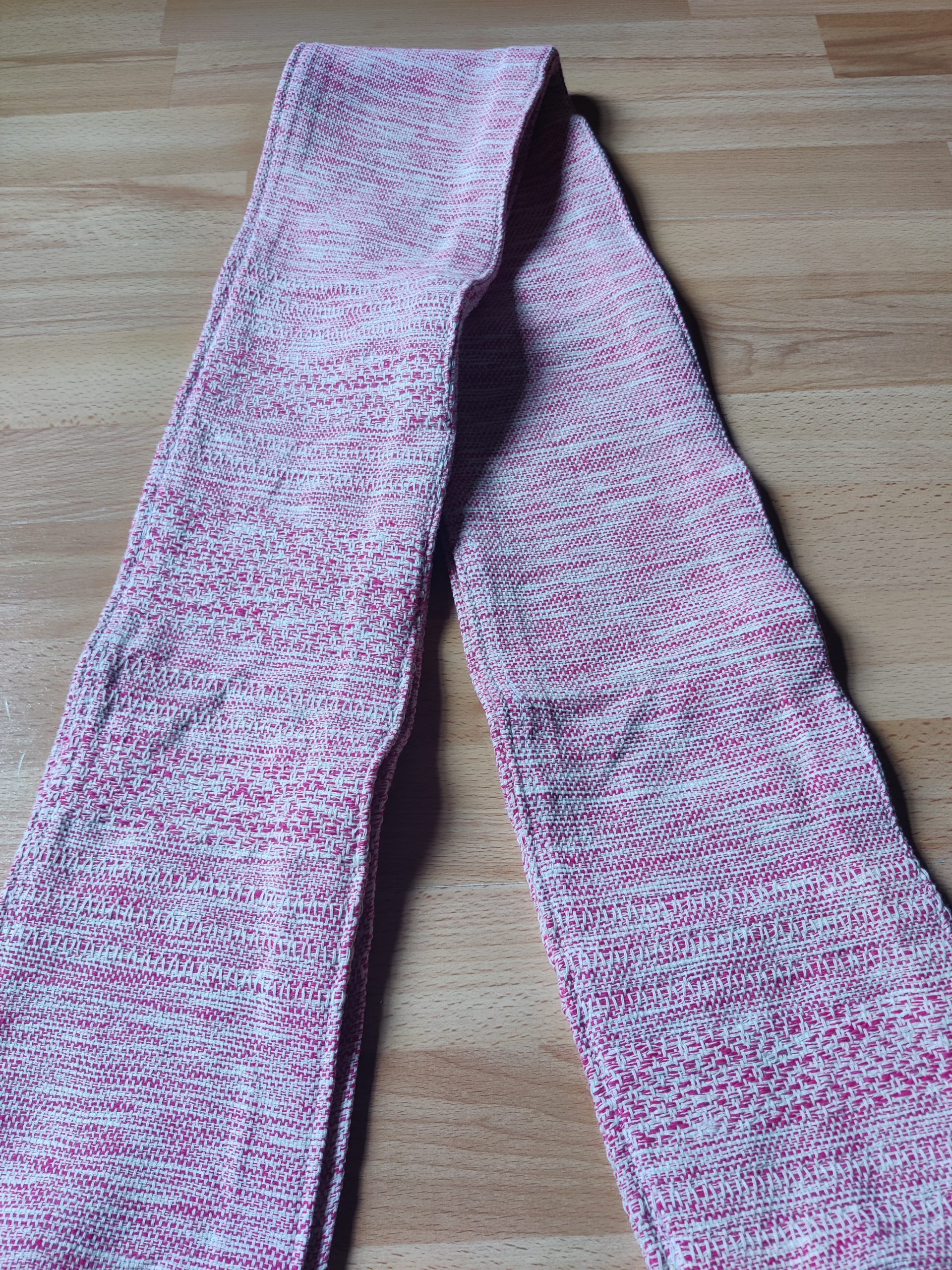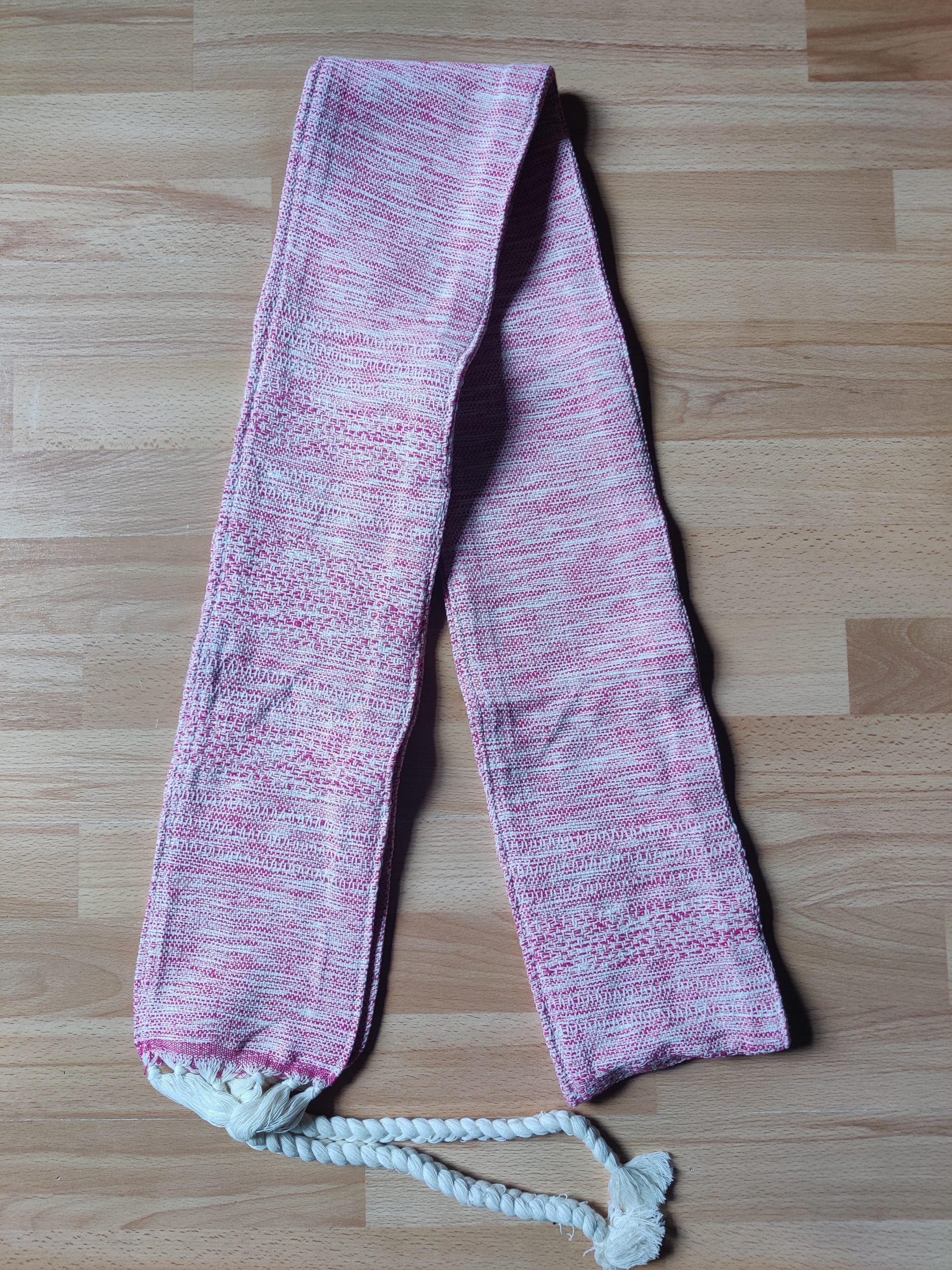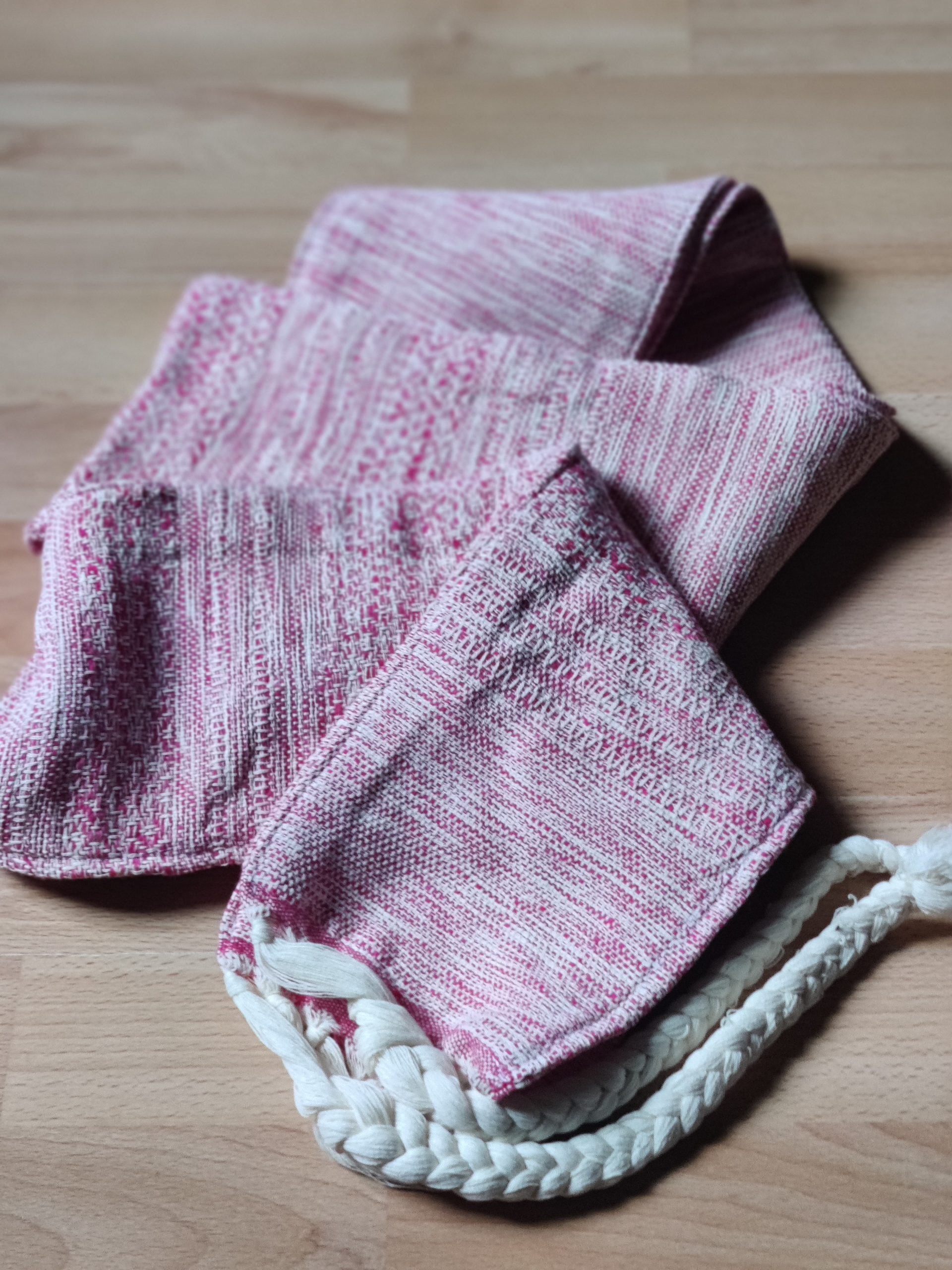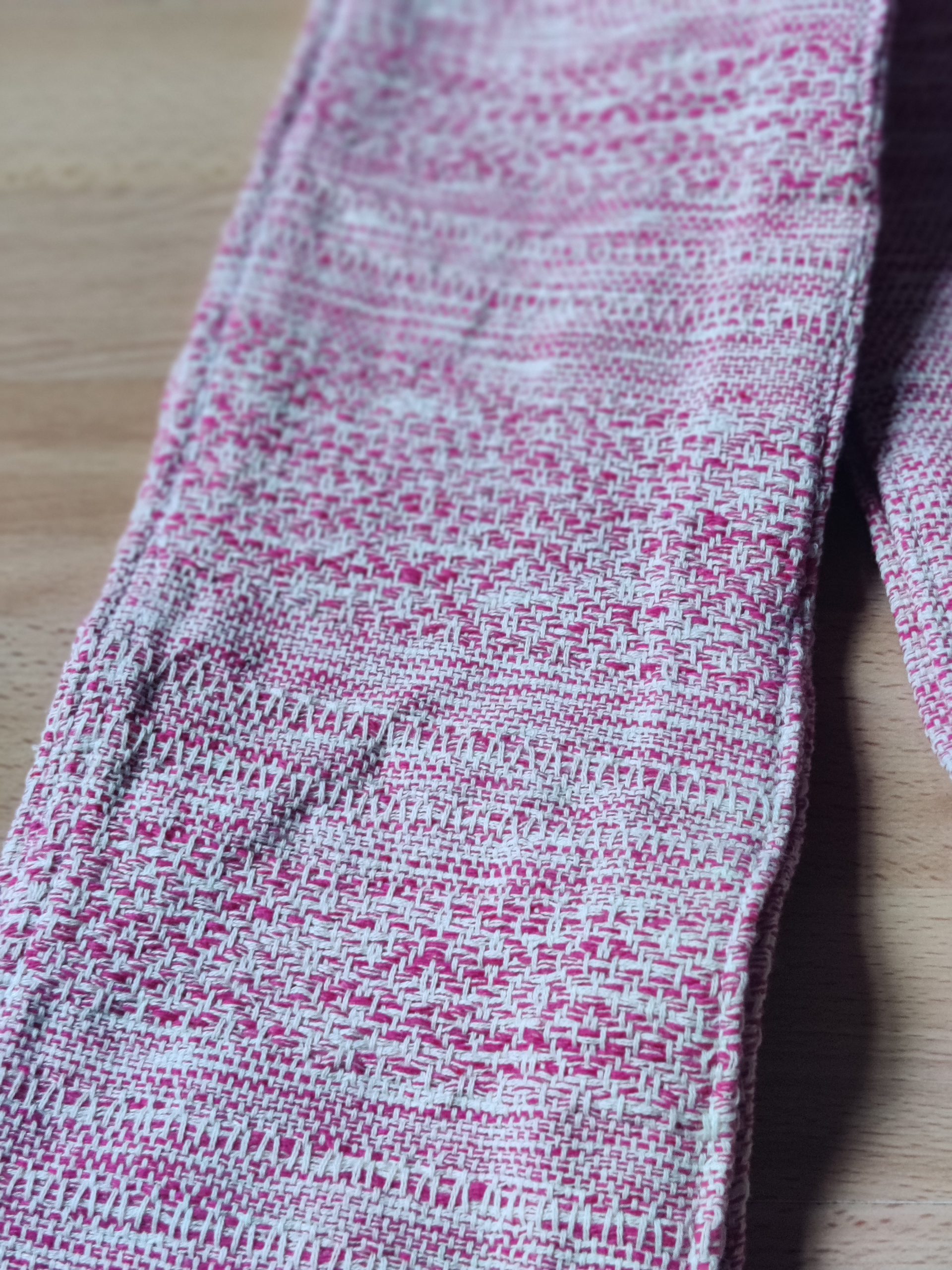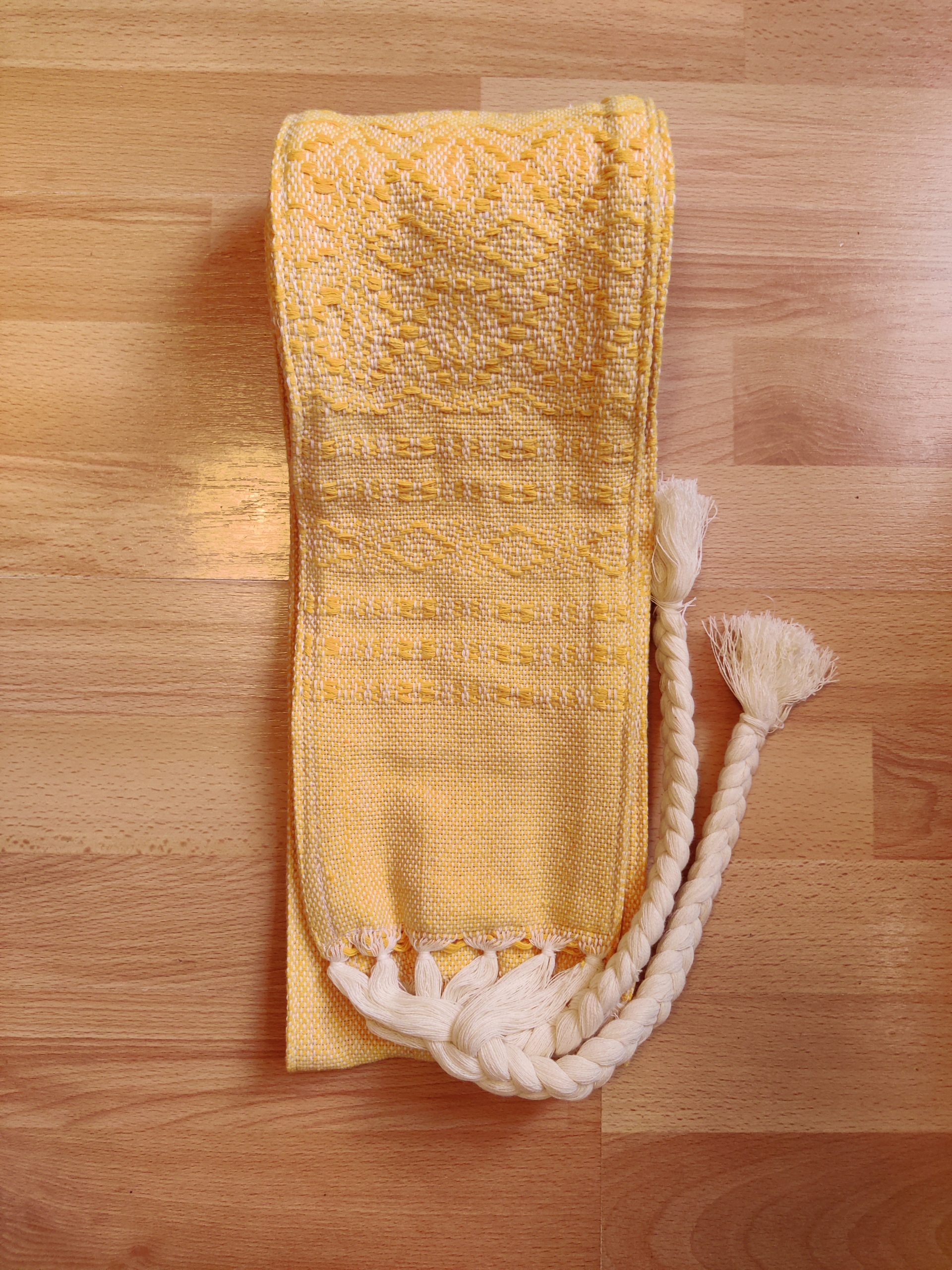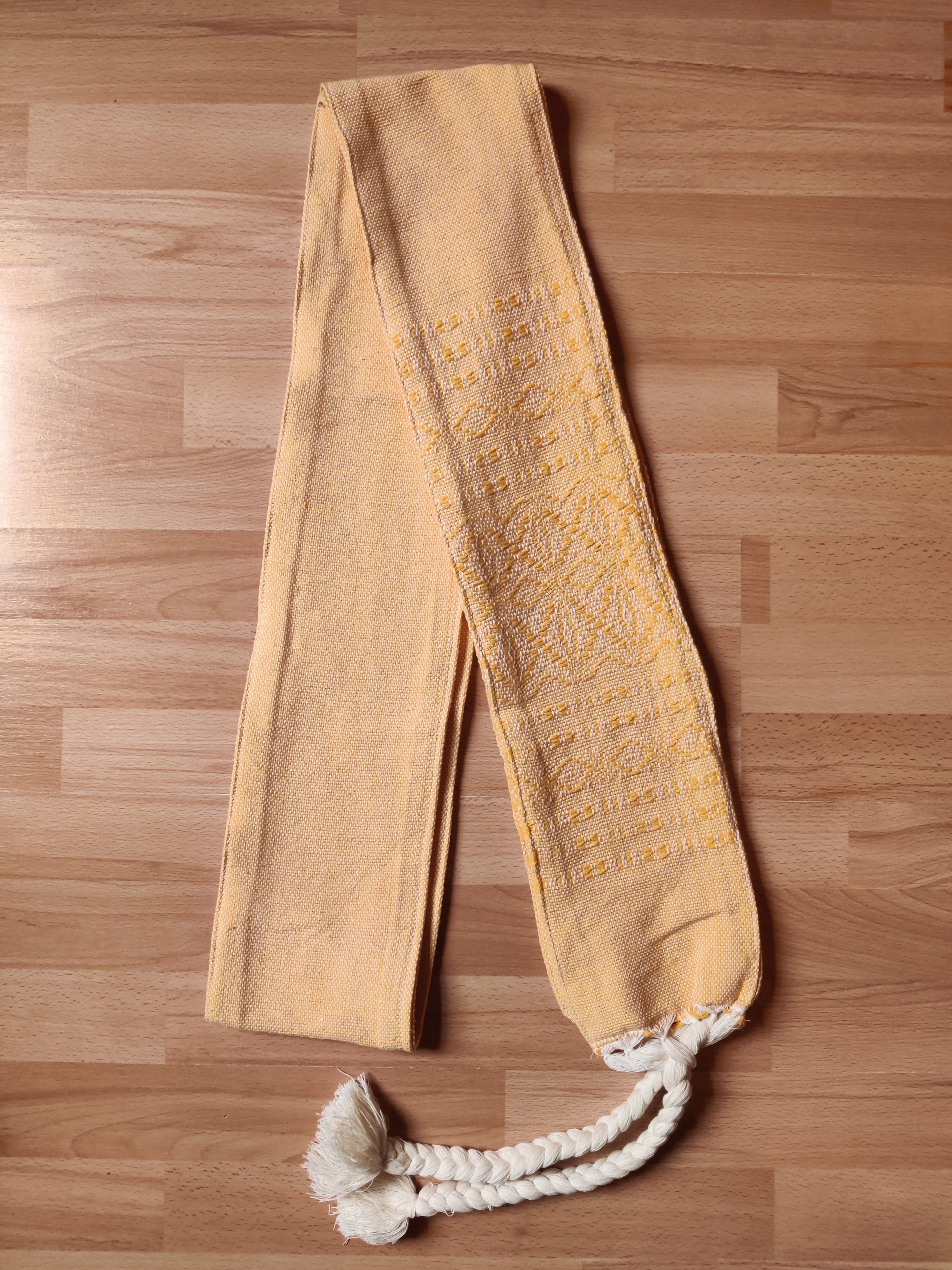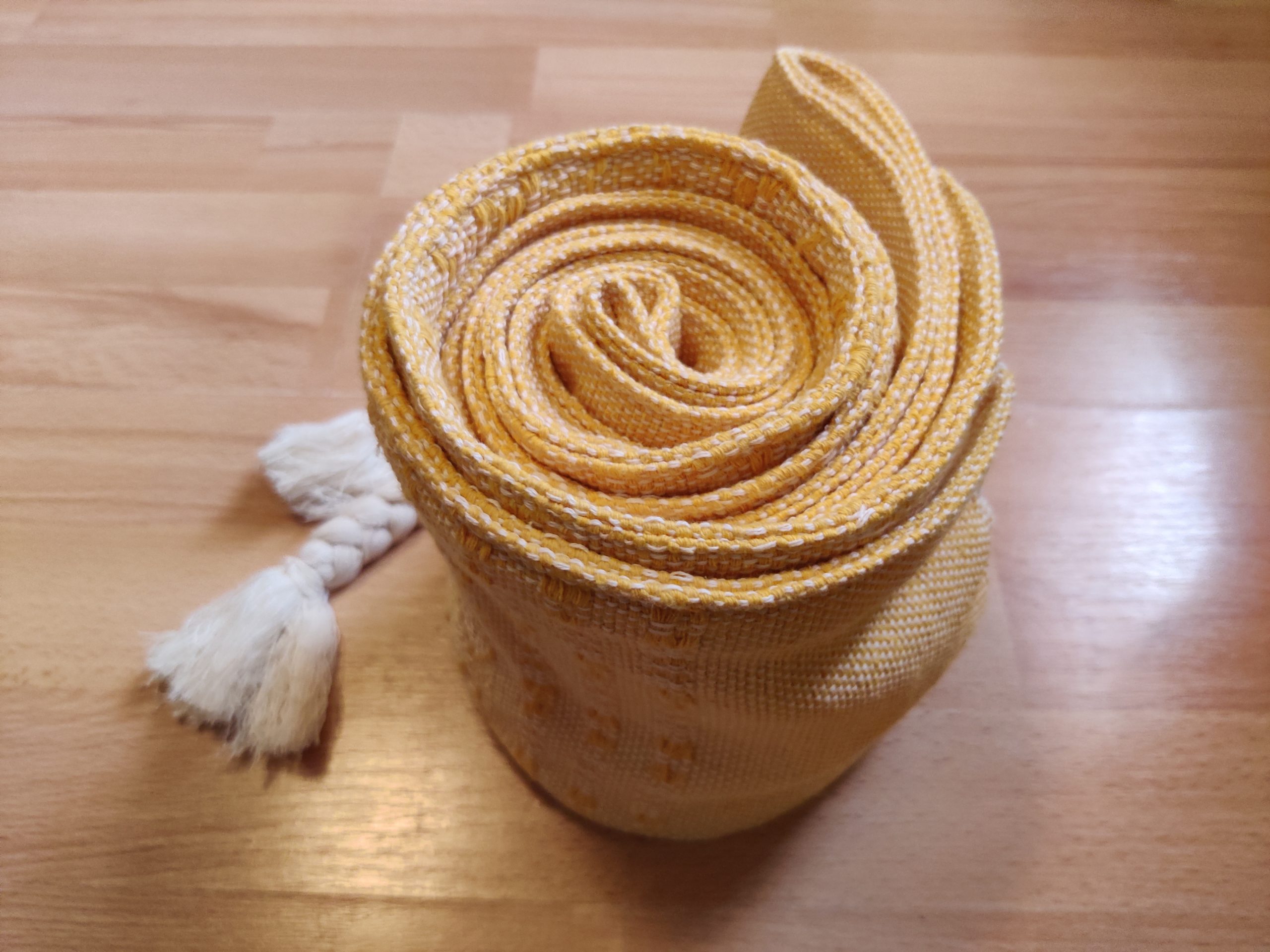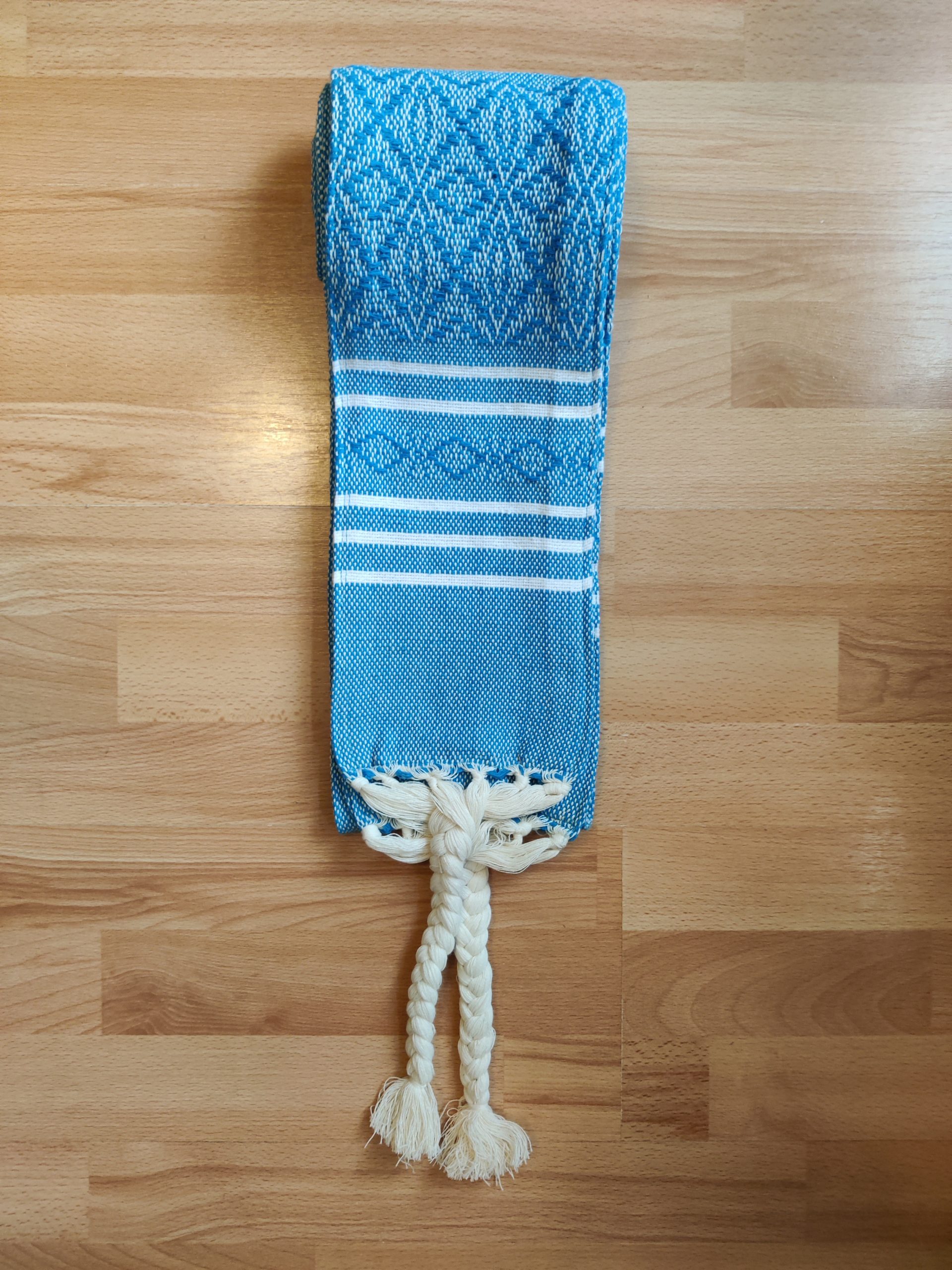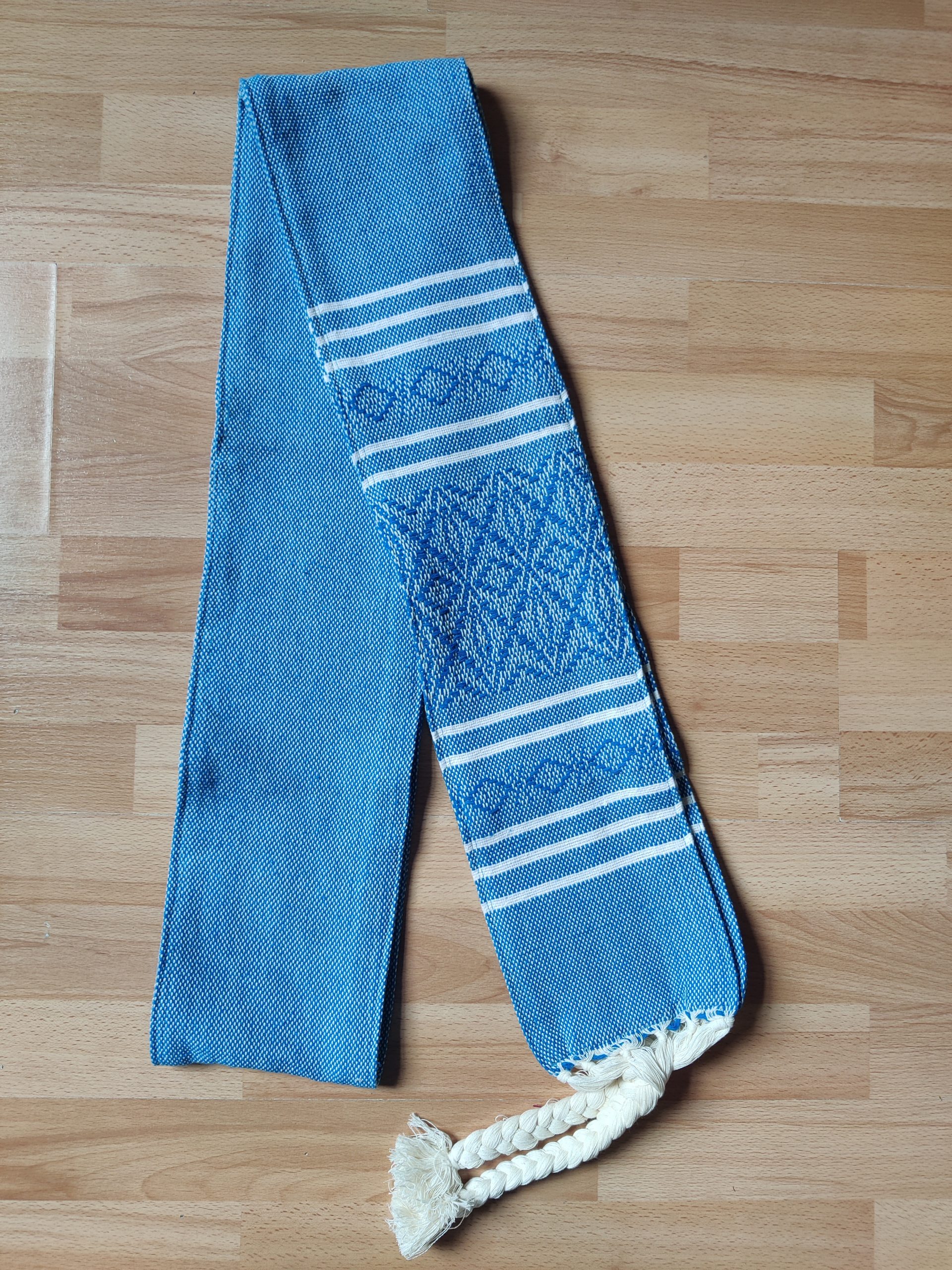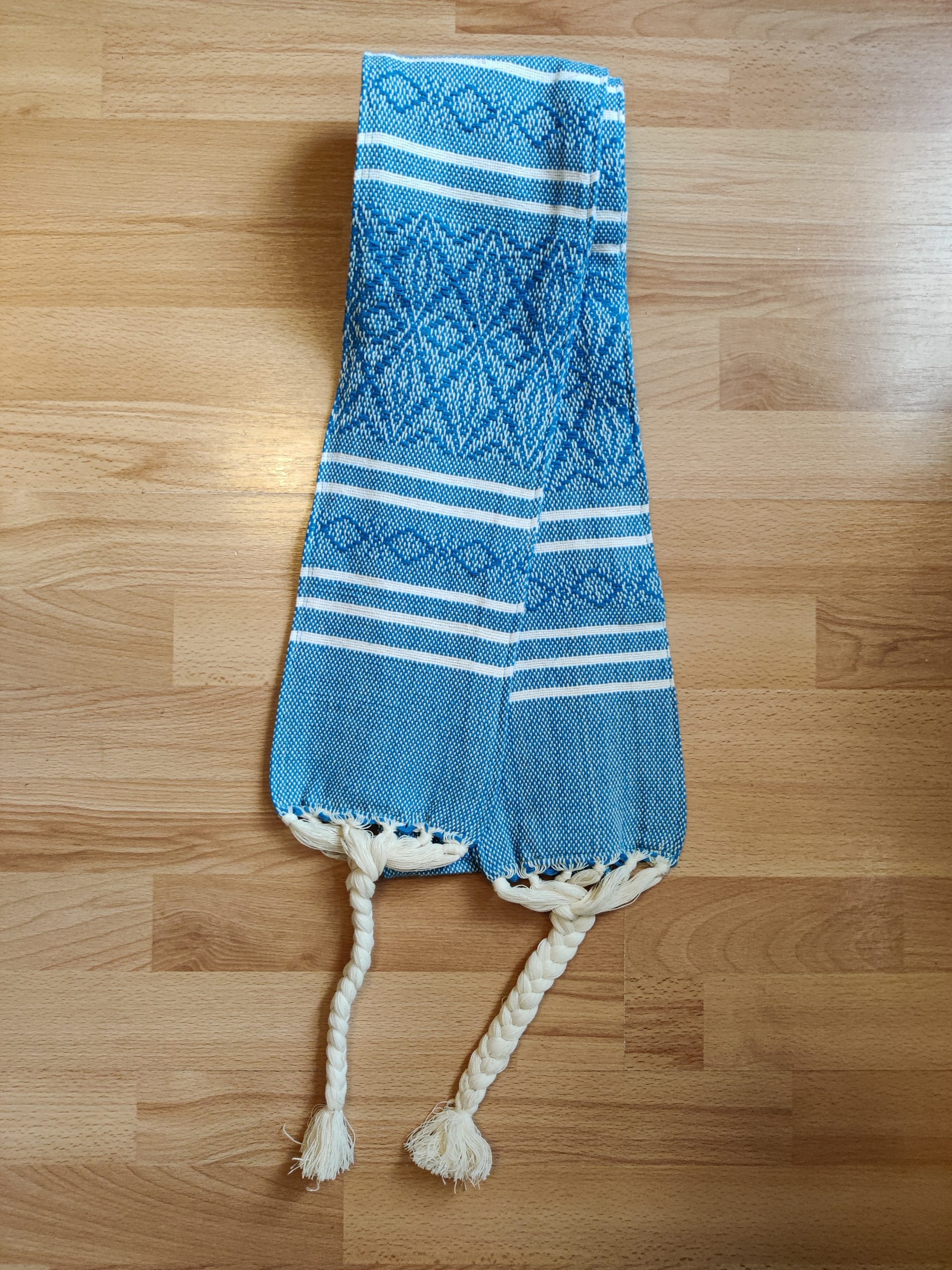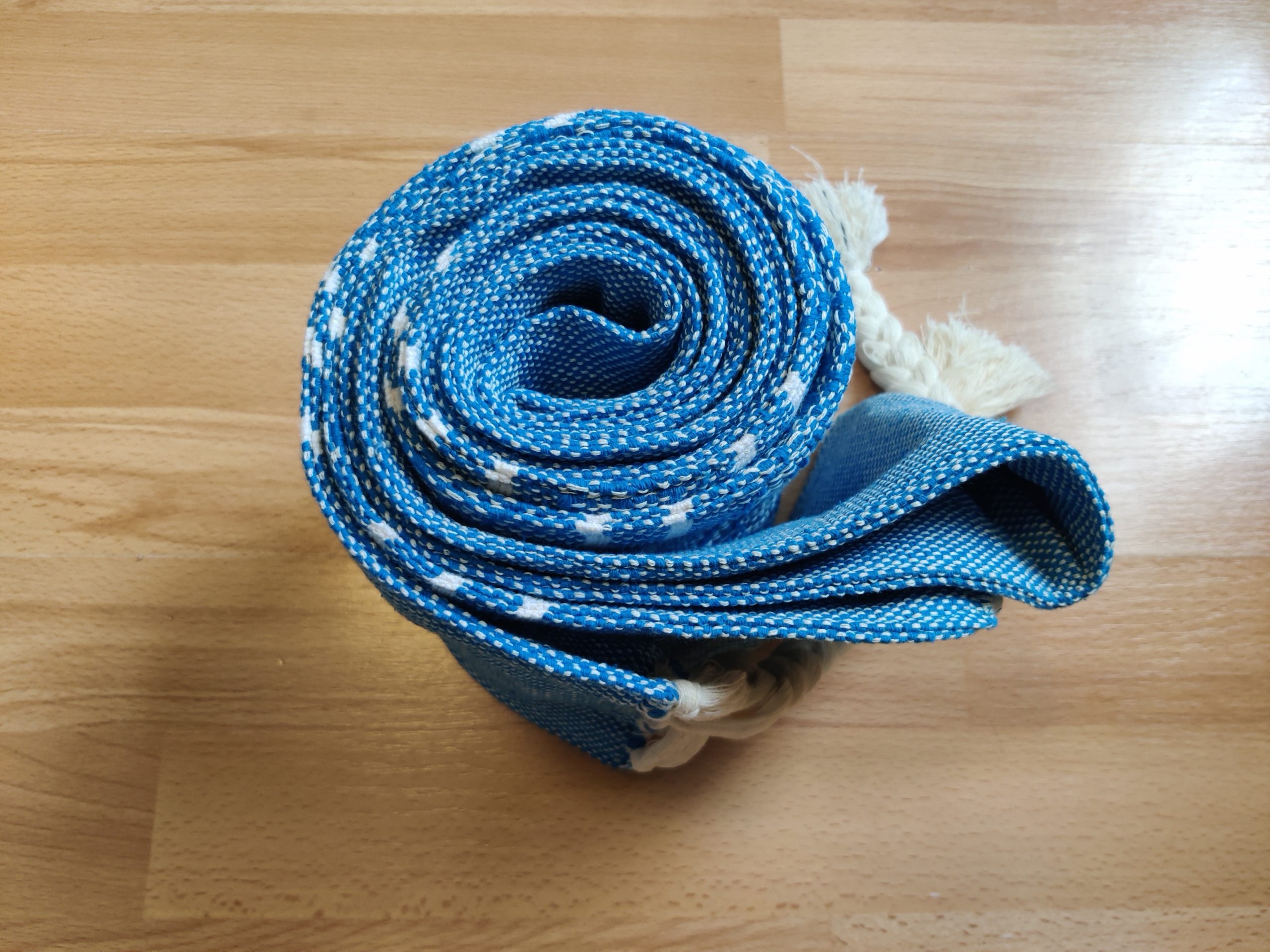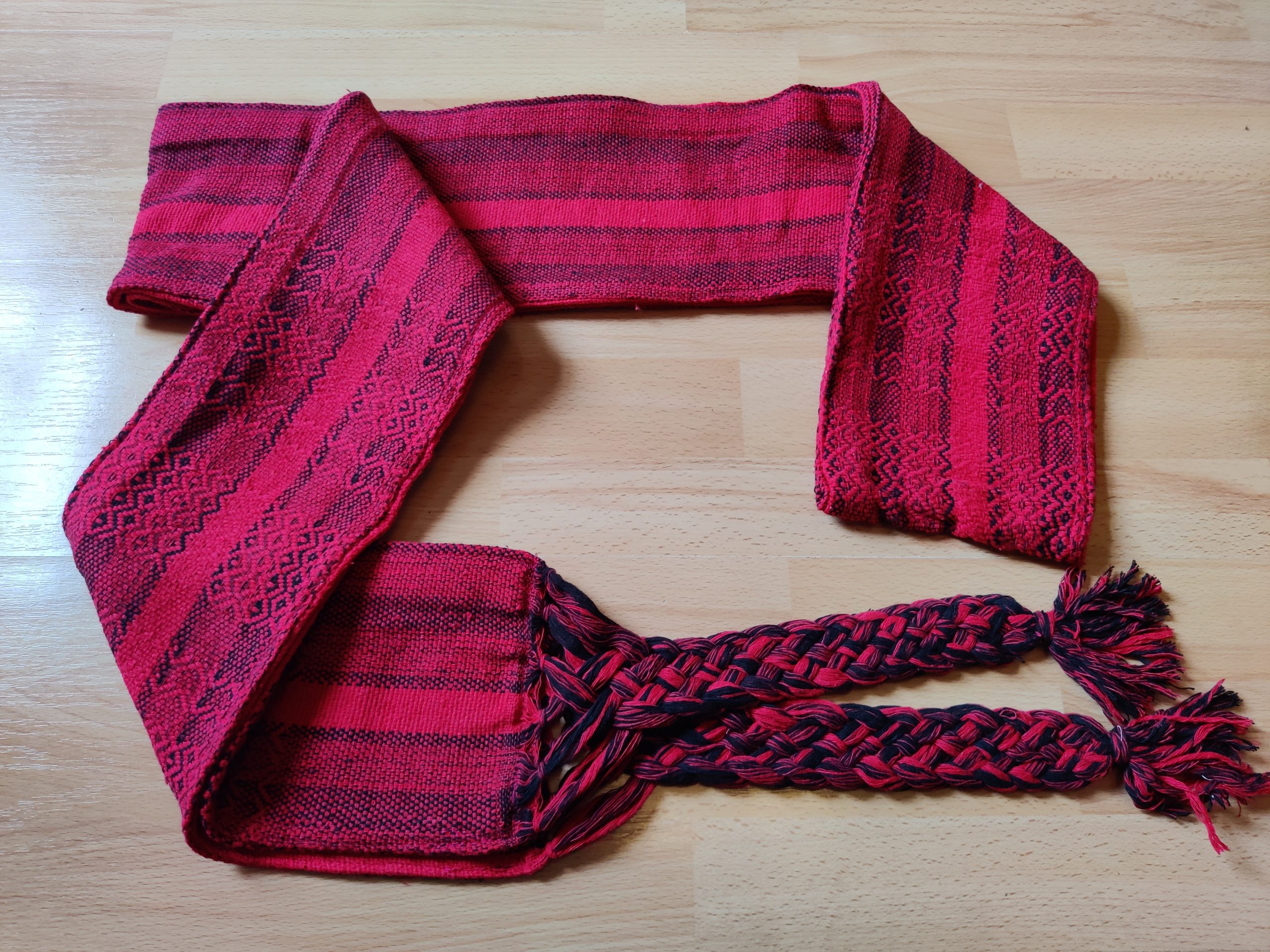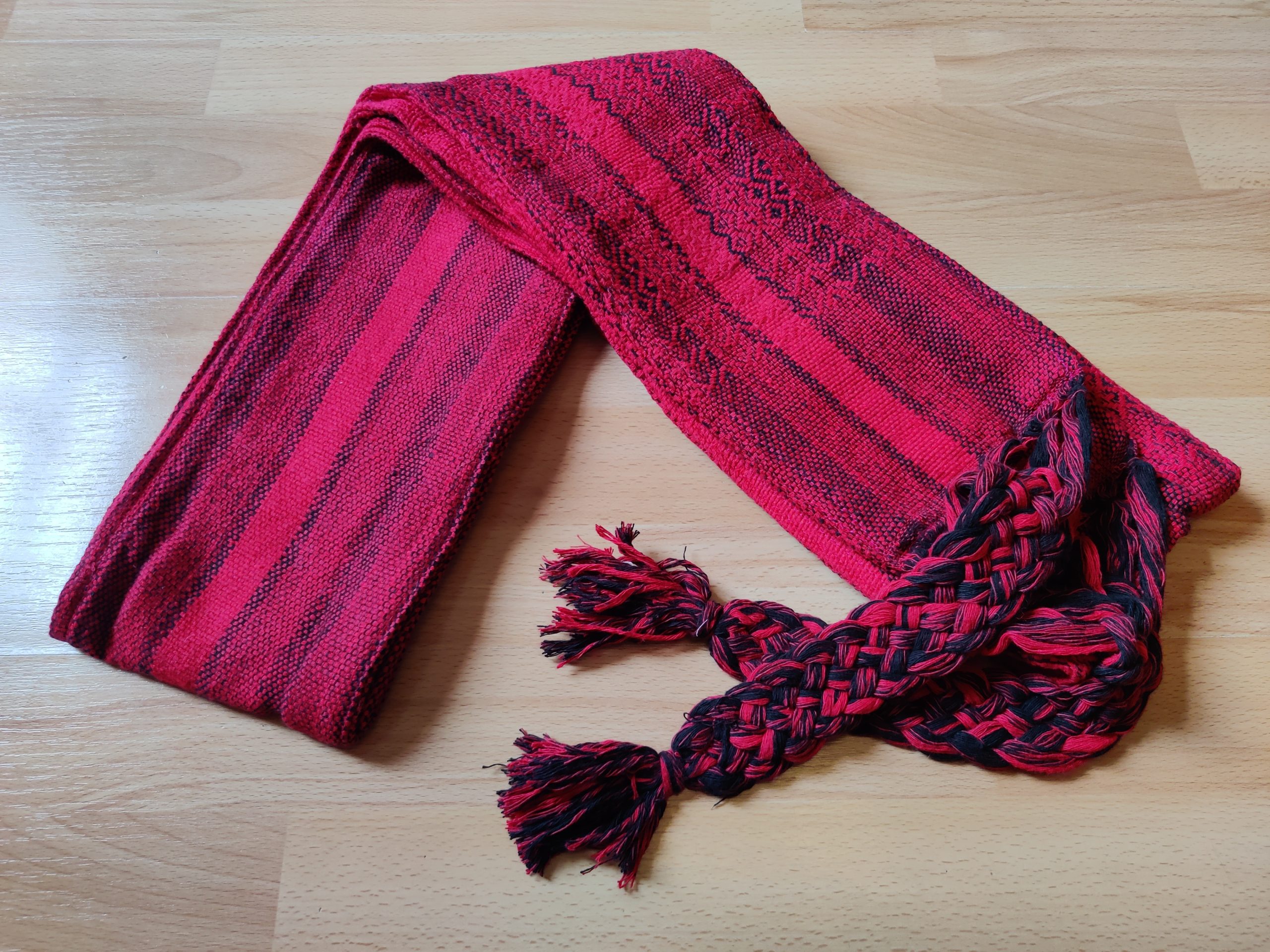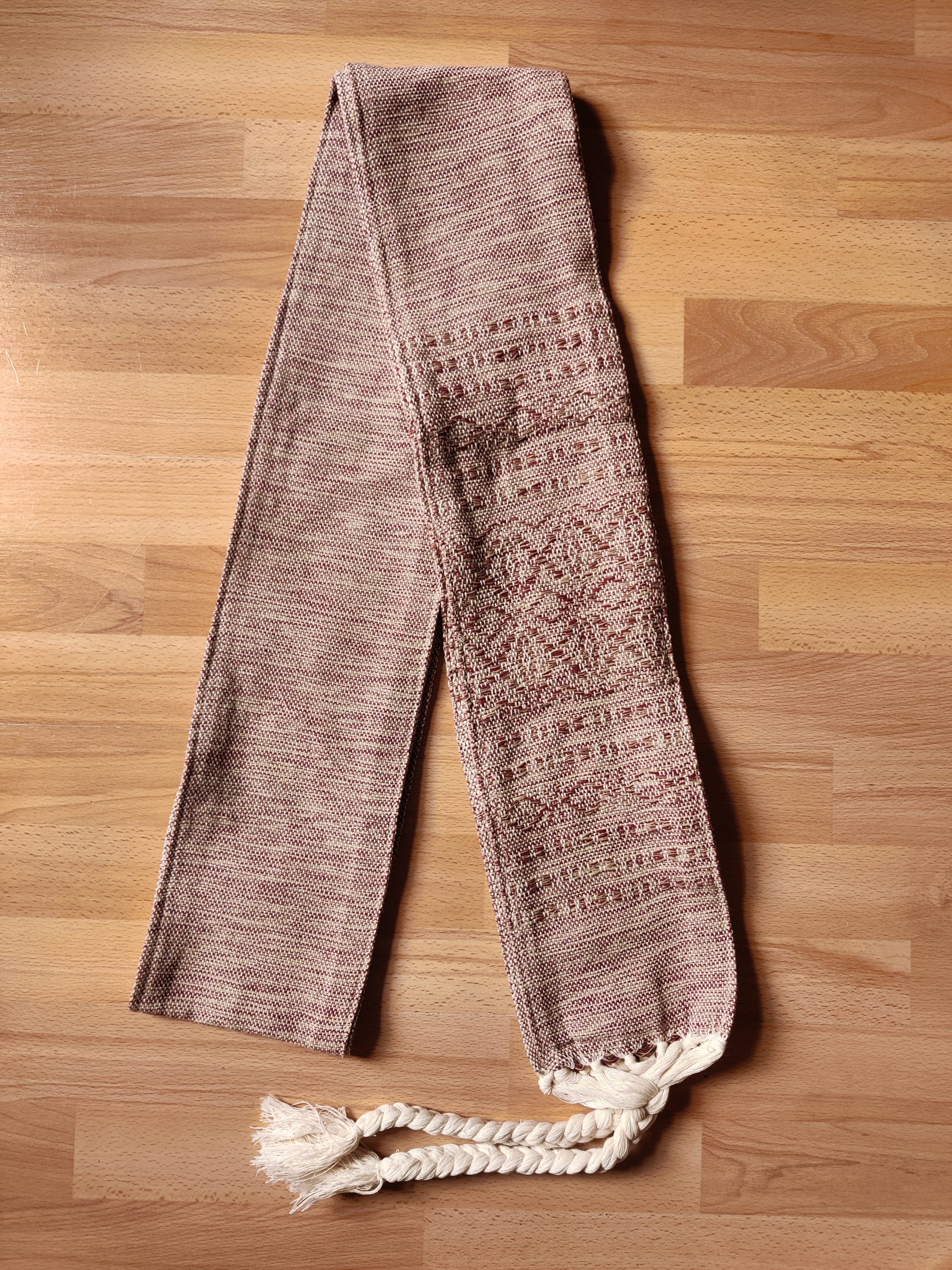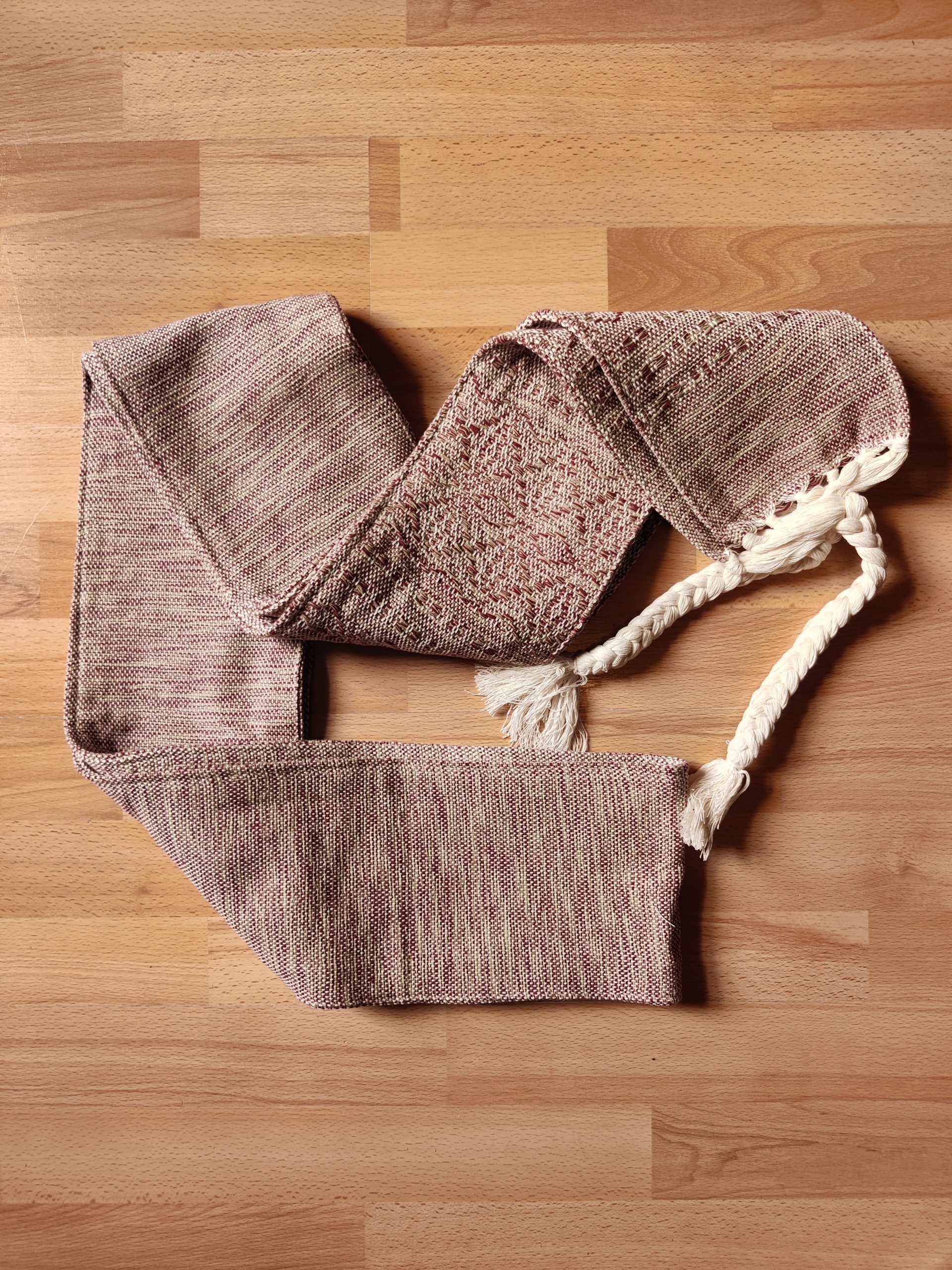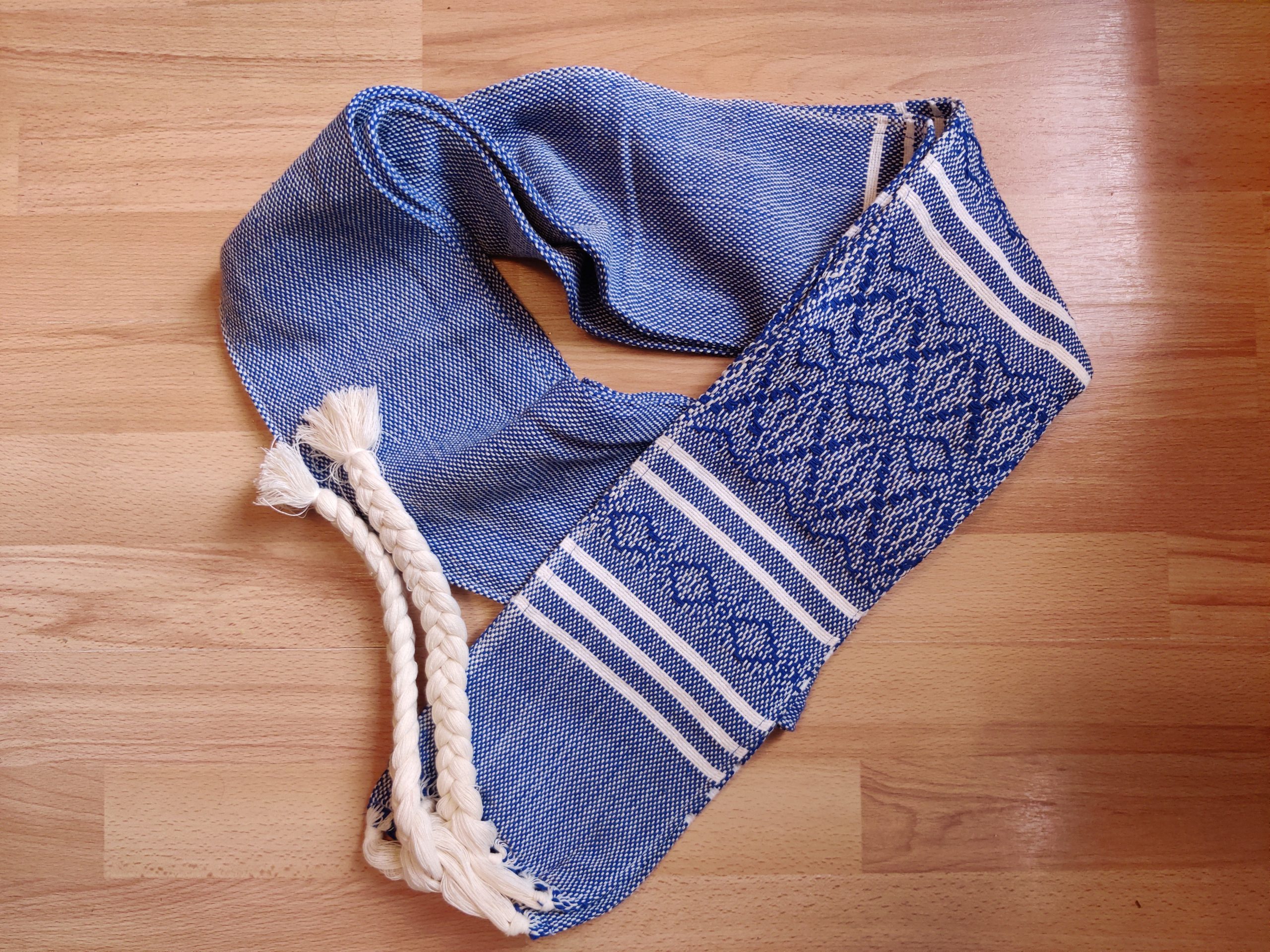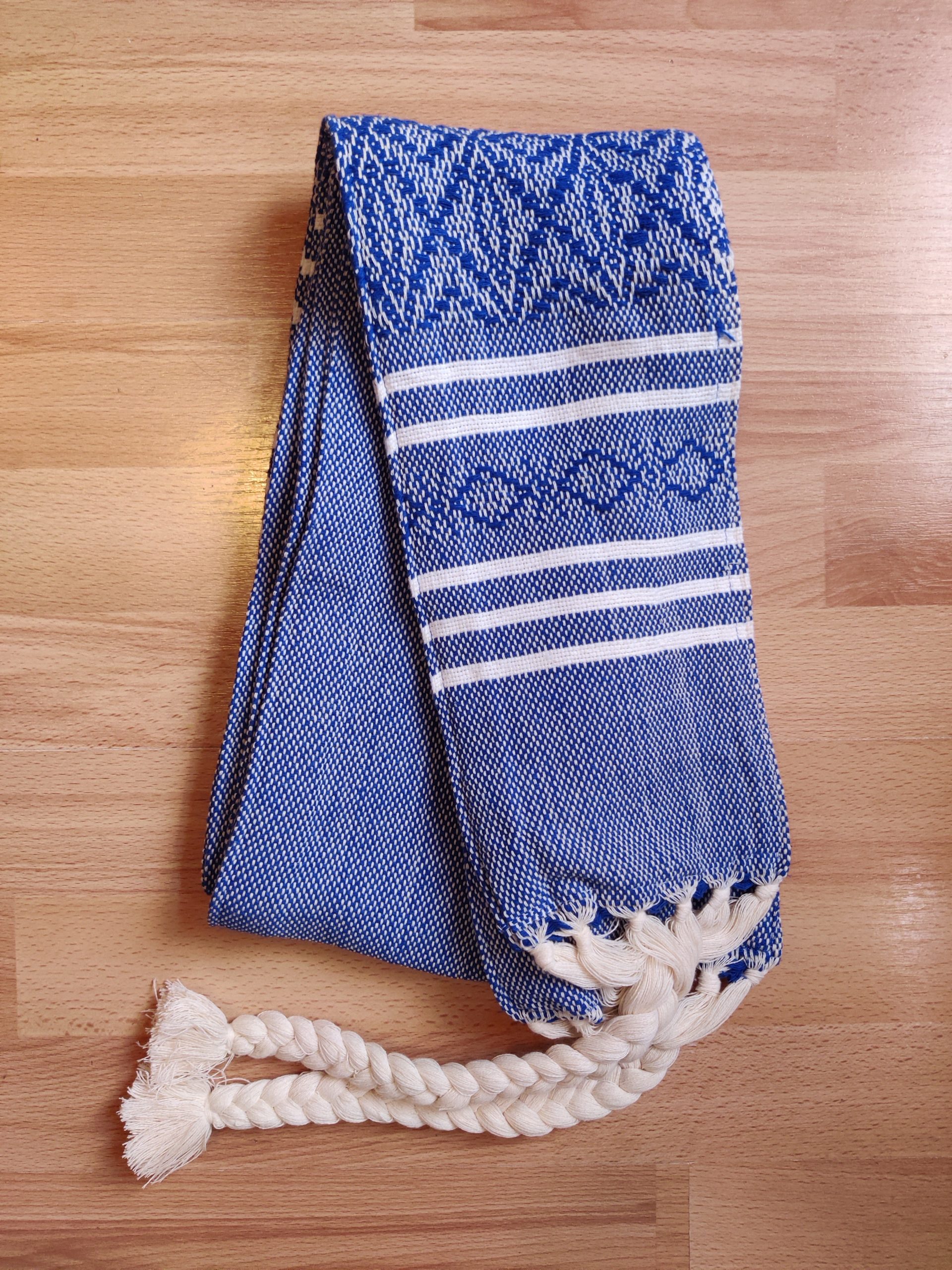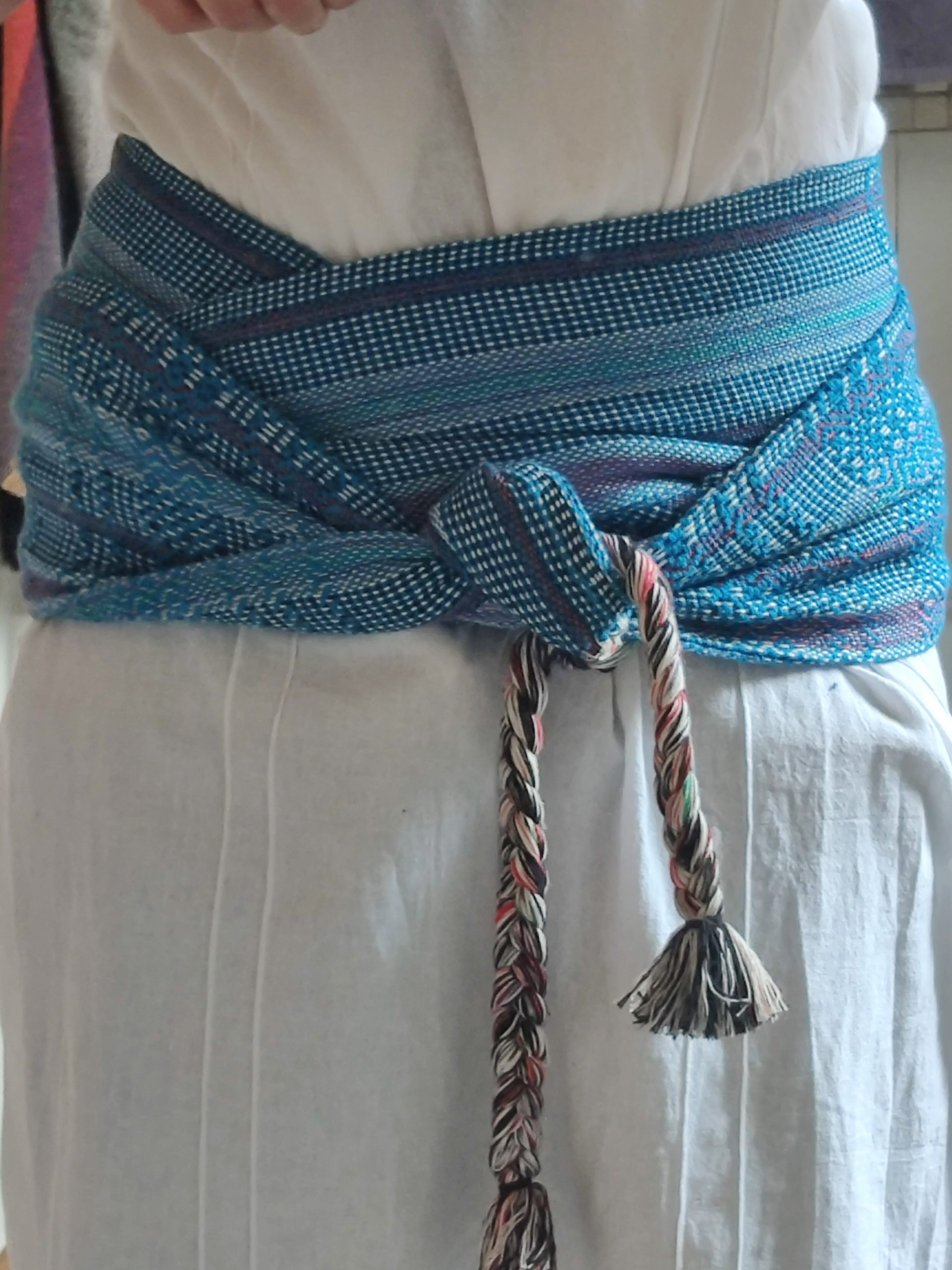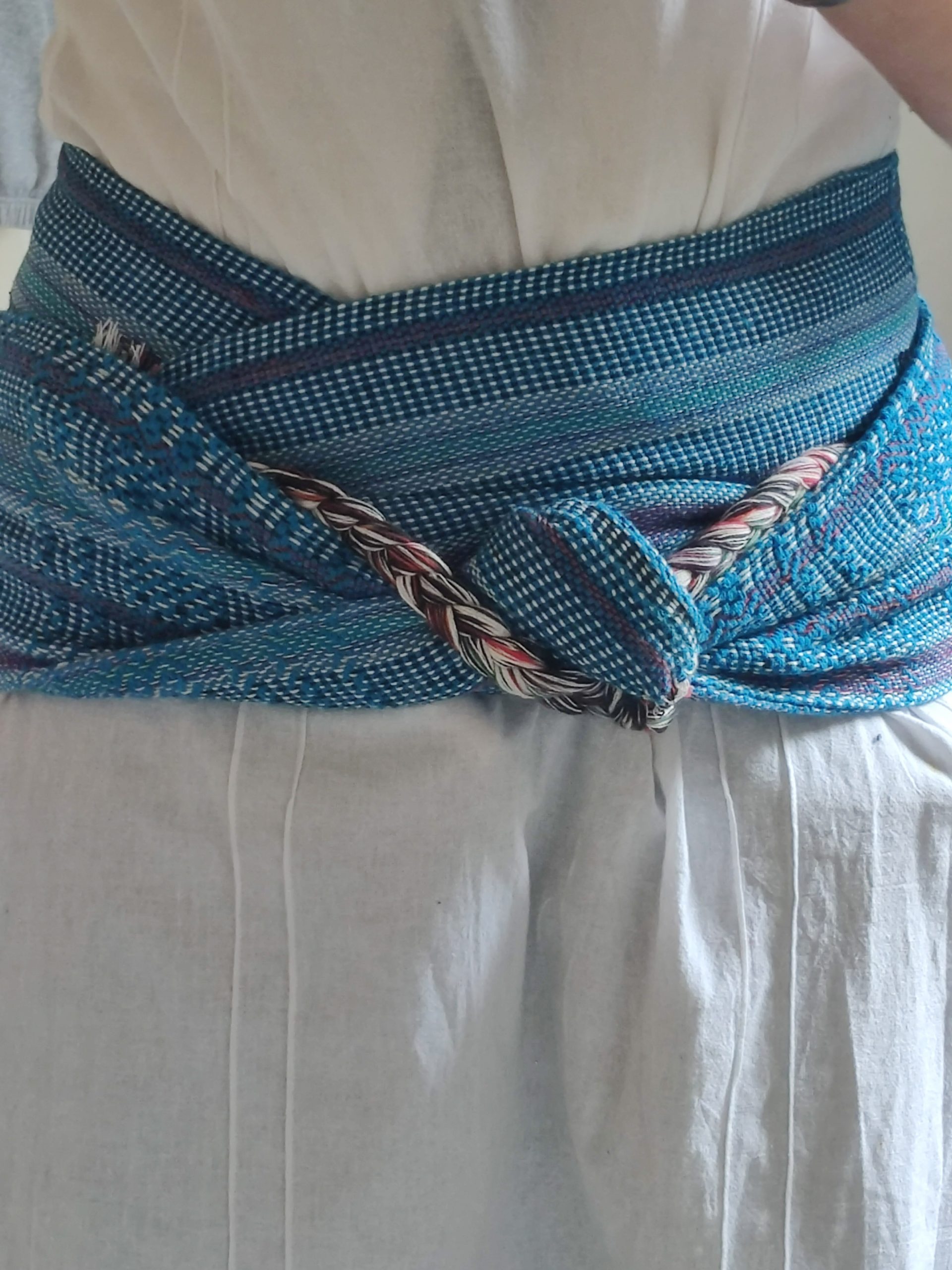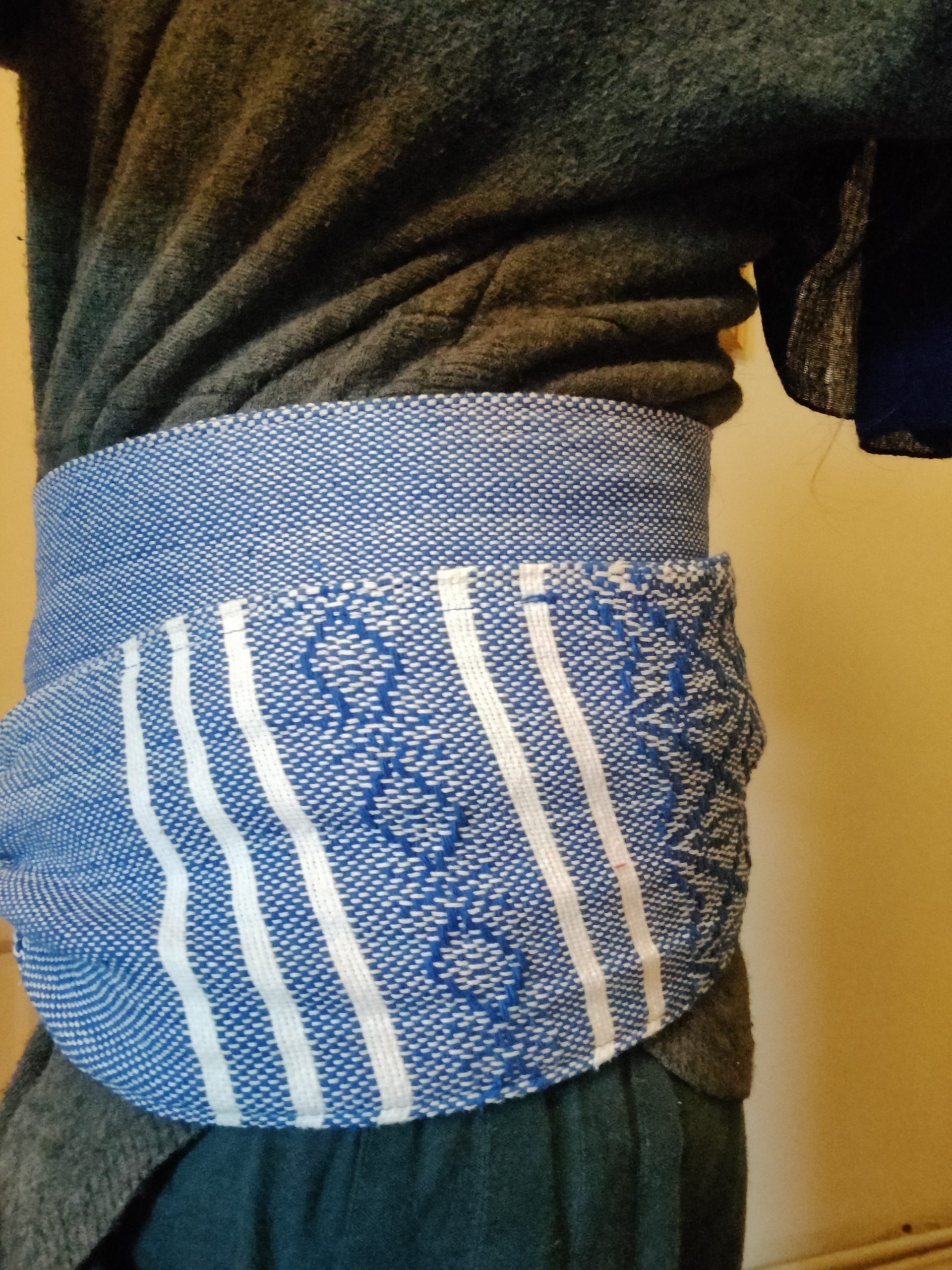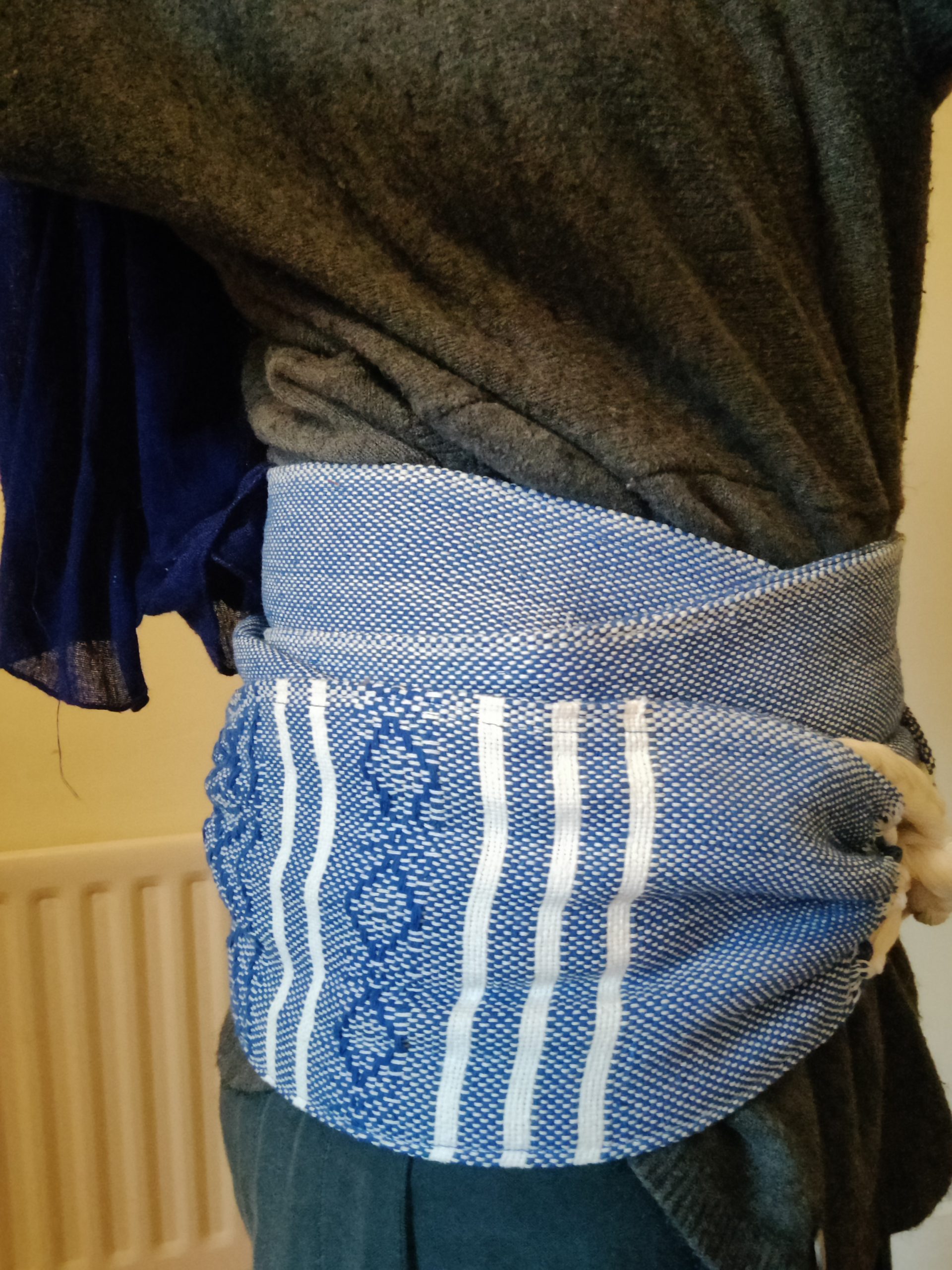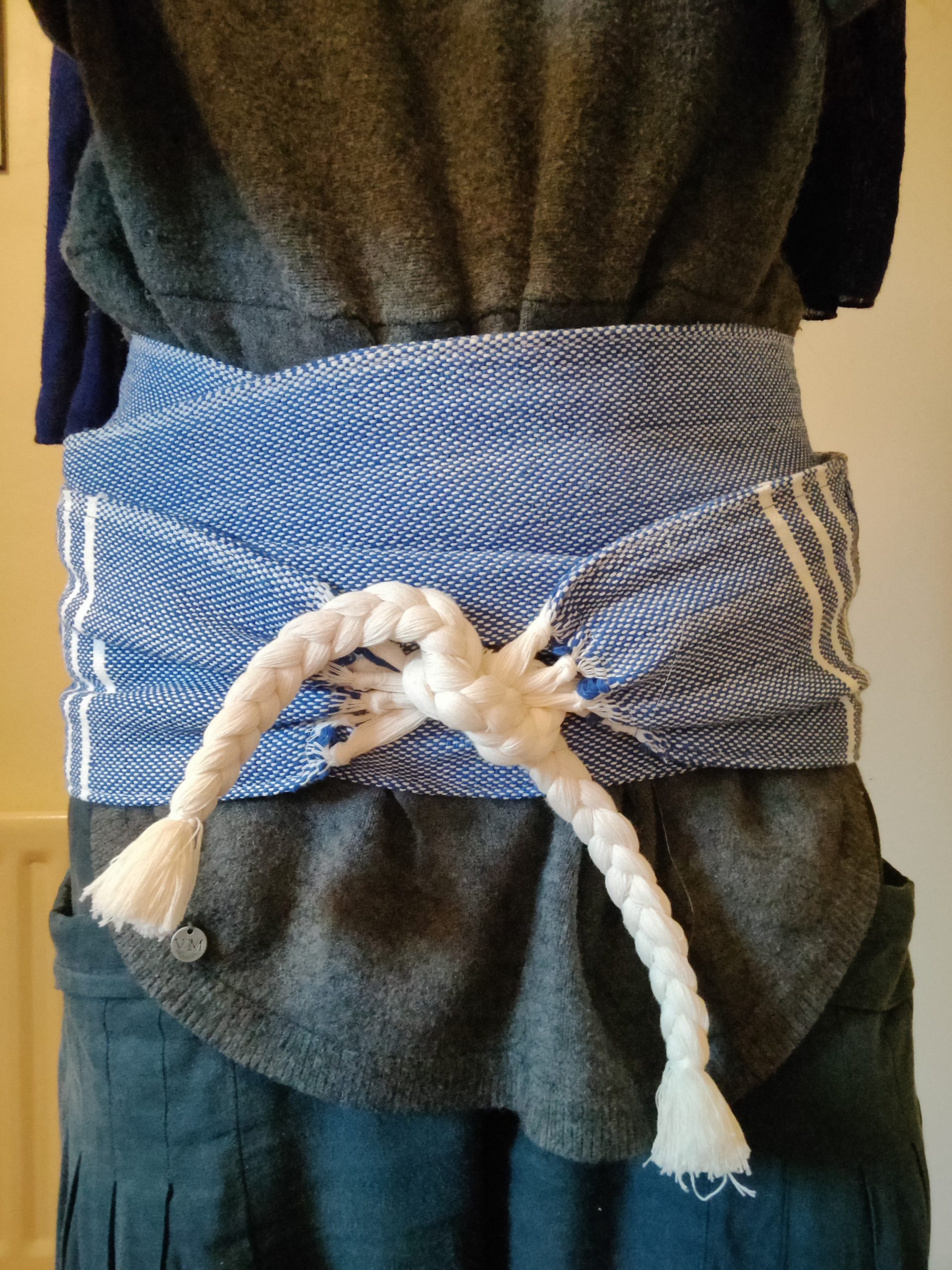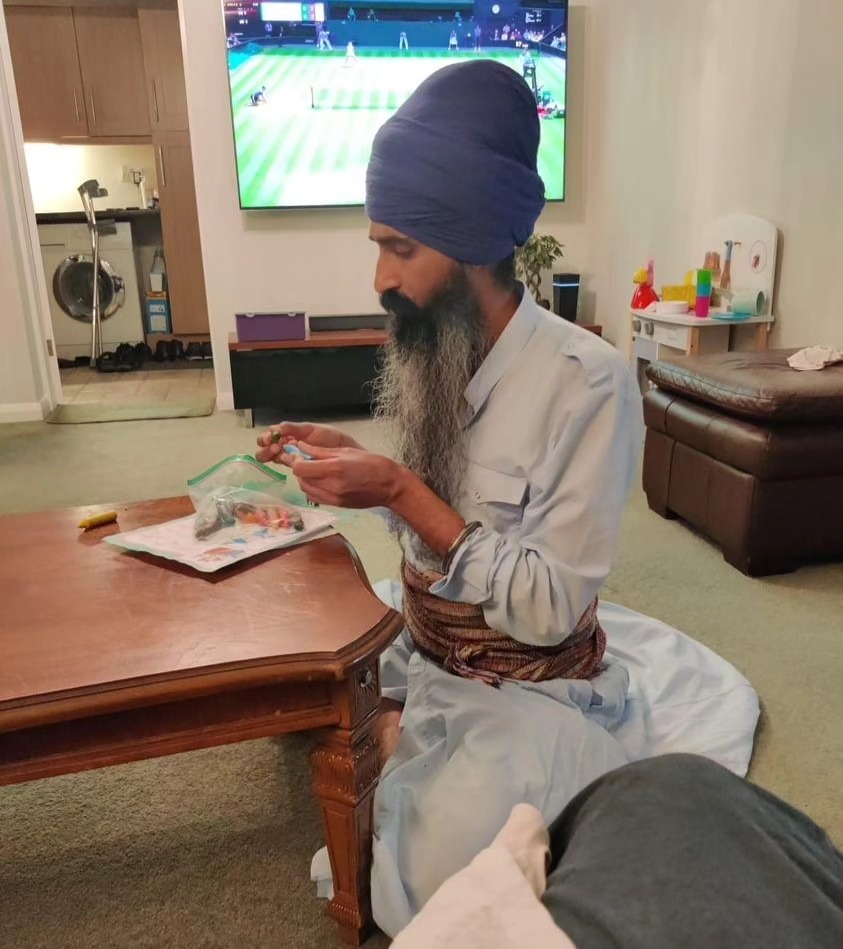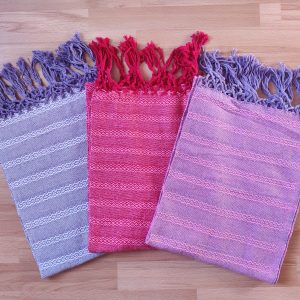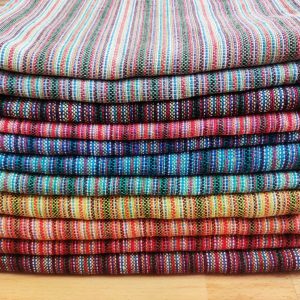Description
These traditional Fajas or Womb Belts are made out of double cotton fabric by artisans in Oaxaca in Mexico, to the design of the Colombian Chumbe. They wrap several times around the hips and the ends can then be tucked in or they can be tied with the plaits. The thick fabric has been woven on a pedal loom out of cotton, and the pieces are then sewn together from the edges to make it double the thickness of a normal rebozo – and have it give double the support!
The length is around 3m, plus the plaits/fringes (which make tying easy), and around 15cm wide. They are quite heavy: a Faja weighs around 550-600g.
You can find videos of me explaining its use here: https://www.facebook.com/japjeet.kaur.nele/videos/2862904900680129
And some quick ones of how to tie them:
– method 1: https://www.instagram.com/p/CtWceefAJxj/
They are made to bring comfort, support and protection – traditionally they are used as a protection for the energy center (known to different cultures under the various names of dharan, dan tien, hara, navel point — much like a kamarkassa (cummerbund) in Indian traditions, or a martial arts belt in other Asian traditions) and are part of Latin American traditional attire.
Physically they help enormously with back pain and sciatic pain / sciatica, and are also a great support when working in the garden, on your allotment, etc.
The thick fabric gives warmth to the kidneys, which also greatly helps with adrenal fatigue and burnout.
Several of the above reasons also make them perfect for men to use (my husband wears one every day, he has 3 of his own!).
For women, using a faja brings tremendous nurturing support and warmth to the pelvic organs and kidneys while menstruating, when pregnant (they are tied underneath the bump for support under the bump and on the pelvis, helping with pelvic pain, lower back pain, pubic bone pain, helping to maintain an ergonomic posture …), during the postpartum, during a miscarriage, for endometriosis pains, after a hysterectomy…
They also give profound support for anyone struggling with anxiety or going through grief, literally keeping you together and from unravelling.
When people try them on at mine, I’m always met with a look of profound disbelief and the question: “Where has this been my whole life?” or “How is this possible?” — you almost really have to try them to understand what a difference they make on so many levels.
I offer a 5% discount if you order 5 rebozos & fajas or more, and a 10% discount if you order 10 rebozos or fajas or more (the Chakra/Rainbow coloured open weave sets don’t count towards the 10 as they are already discounted – order the rebozos separately if you want the 10% discount on your entire order). Use coupon codes 5%on5 or 10%on10. Not applicable on sale items.
The webshop only accepts UK addresses – however, for international orders simply contact me via email or whatsapp. We will then organise your shipping and arrange payment for your order via PayPal or otherwise. I offer FREE shipping to Europe for Faja & Rebozo orders of £200 or over.




